Saturday was an extraordinary, and extraordinarily troubling, day in American politics. As President Donald Trump threw an unprecedented military parade to celebrate the U.S. Army’s (and his own) birthday in Washington, D.C., as many as five million people across the country participated in the equally historic No Kings protests against him.
The New Republic sent five photographers—Aaron Agosto, Paola Chapdelaine, Ron Haviv, Jesse Ilan Kornbluth, Henry Villarama—to cover these events, from conservative small towns (Libby, Montana; Hendersonville, North Carolina; and Spartanburg, South Carolina) to big blue cities (D.C., New York City, and Los Angeles). Here is what they observed.
Los Angeles
By photojournalist Ron Haviv/VII/Redux
I began the day with a mix of anticipation and anxiety, unsure of what would come next. The No Kings protest was set to take place at City Hall in Los Angeles, where, in the days prior, a combination of peaceful demonstrations, violent clashes, and heightened emotions had gripped the city—and the country. Thousands arrived, some dressed in red, white, and blue, waving flags from the U.S., Mexico, El Salvador, and other Latin American countries.
These flags were handed out, sold, and held high throughout the crowd. Speeches echoed through the plaza, stirring emotions and reminding everyone why they had gathered. I saw anger, sadness, and determination etched into the faces—white, brown, and Black.
Eventually, the crowd began to march through downtown. As some peeled off to go home, others moved toward the nearby Federal Detention Center, guarded by U.S. Marines, National Guard troops, Homeland Security officers, and others. The protesters pressed forward, taunting the lines of security—but remaining peaceful. As their numbers swelled, the L.A. County Sheriff’s Department and LAPD moved in to clear the streets. I saw as officers formed lines and began firing tear gas and rubber bullets into the crowd. Protesters and journalists were equally targeted as the authorities advanced on a defiant, though shrinking, mass of people. I stood watching as the sun set and the 8 p.m. curfew took effect—largely ignored. The standoff continued into the night. I heard the chants persist, saw the projectiles flying through the air. Neither side seemed willing to let the other have the final word.
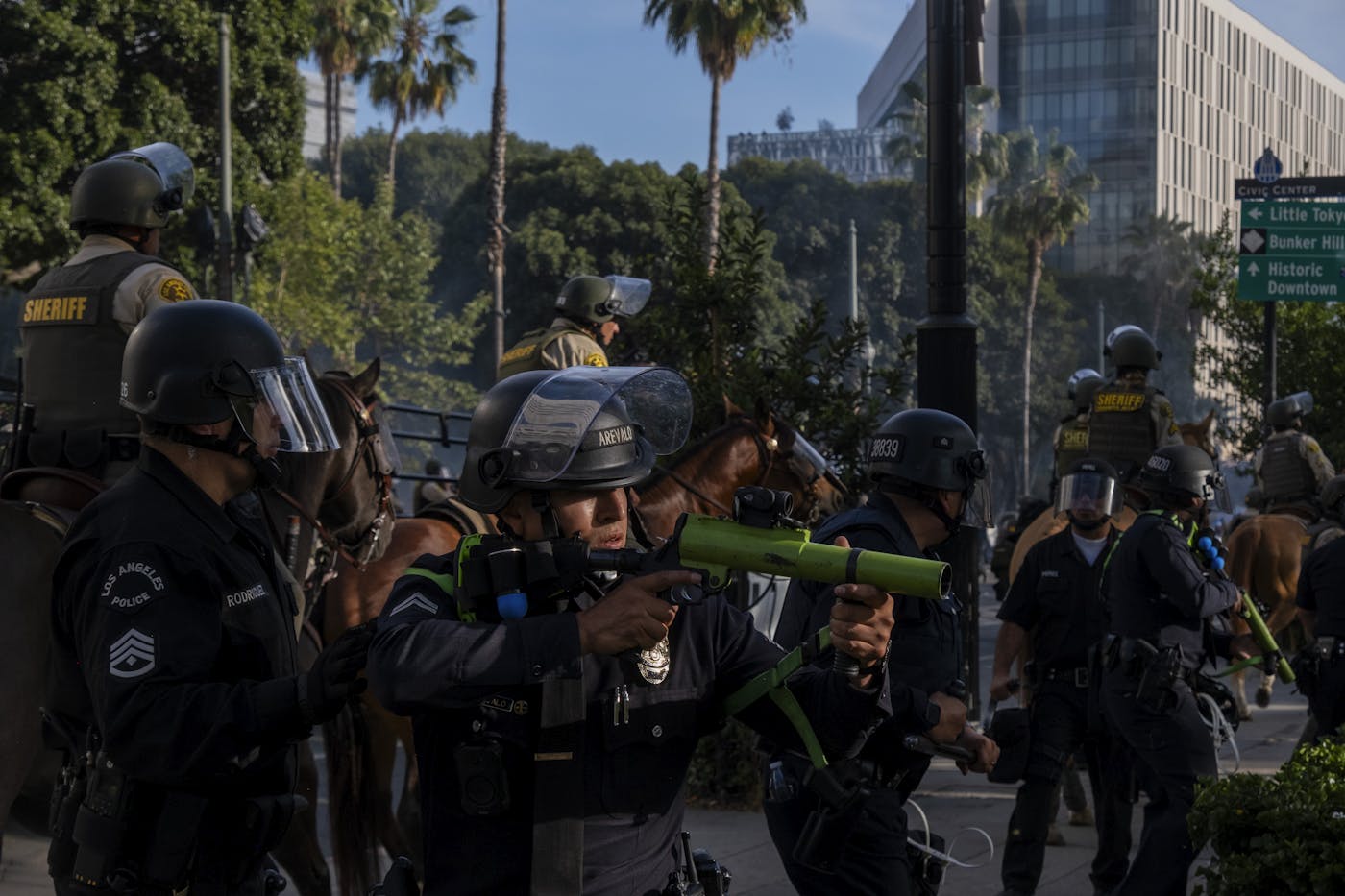
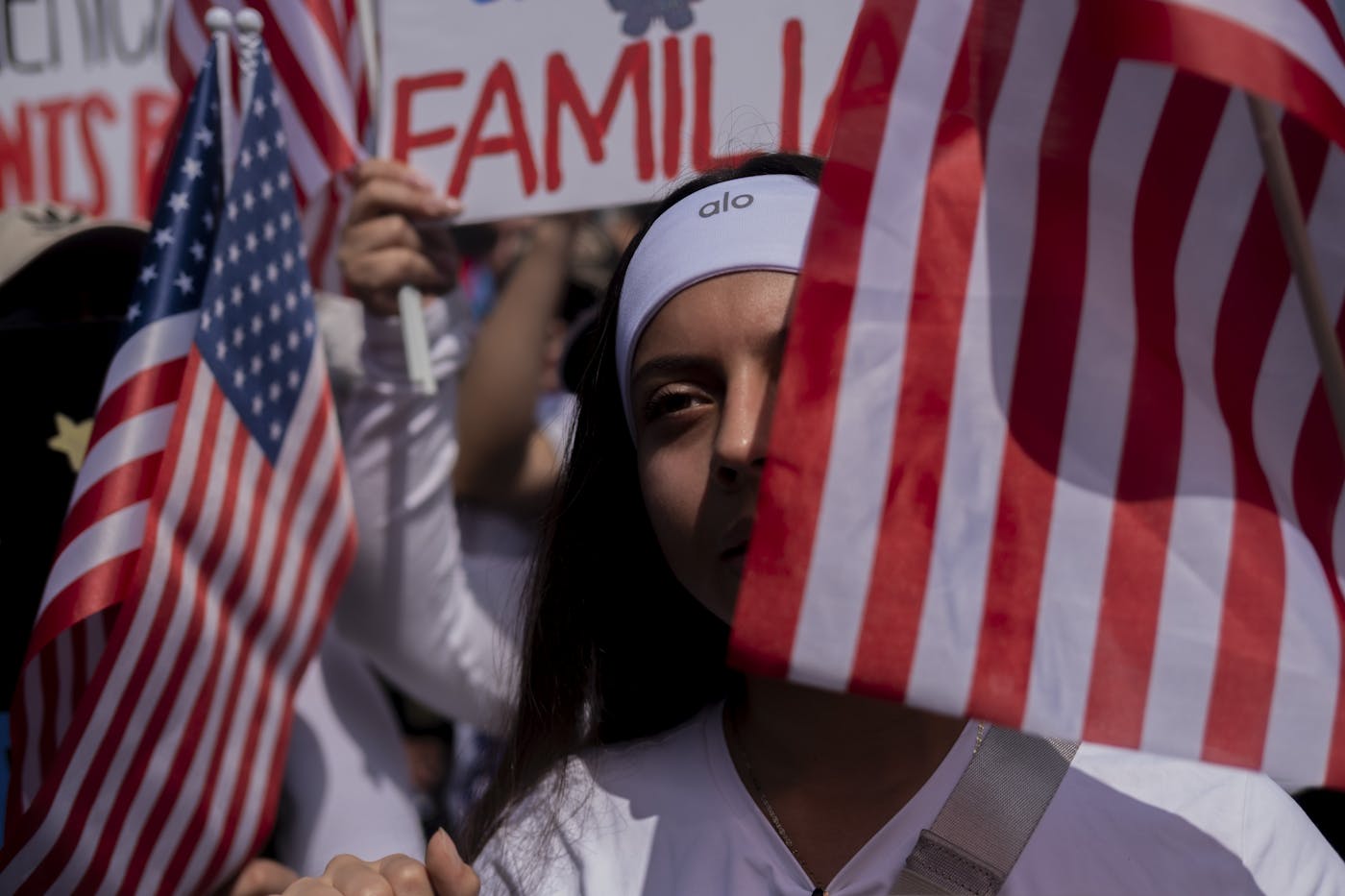
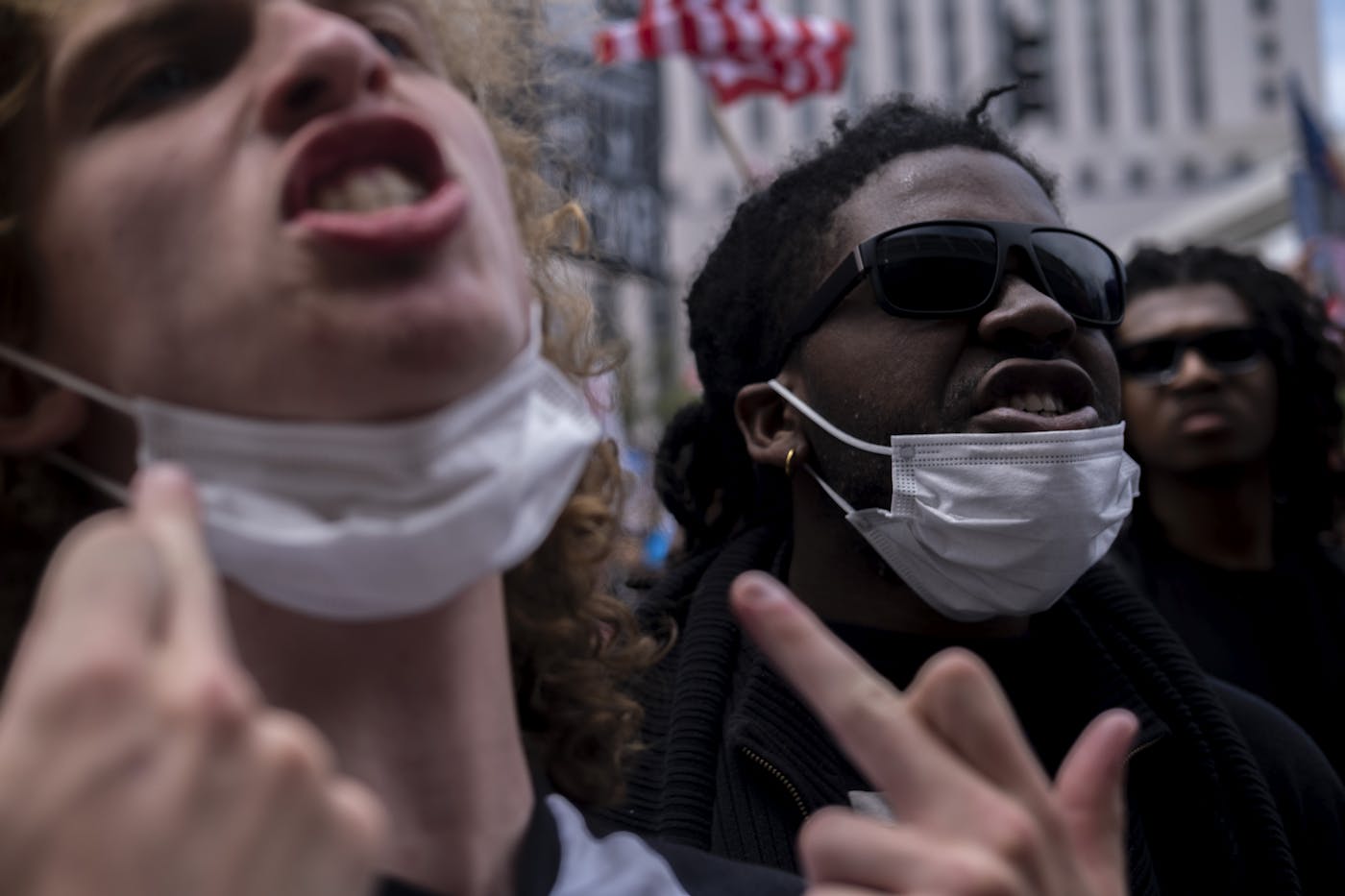
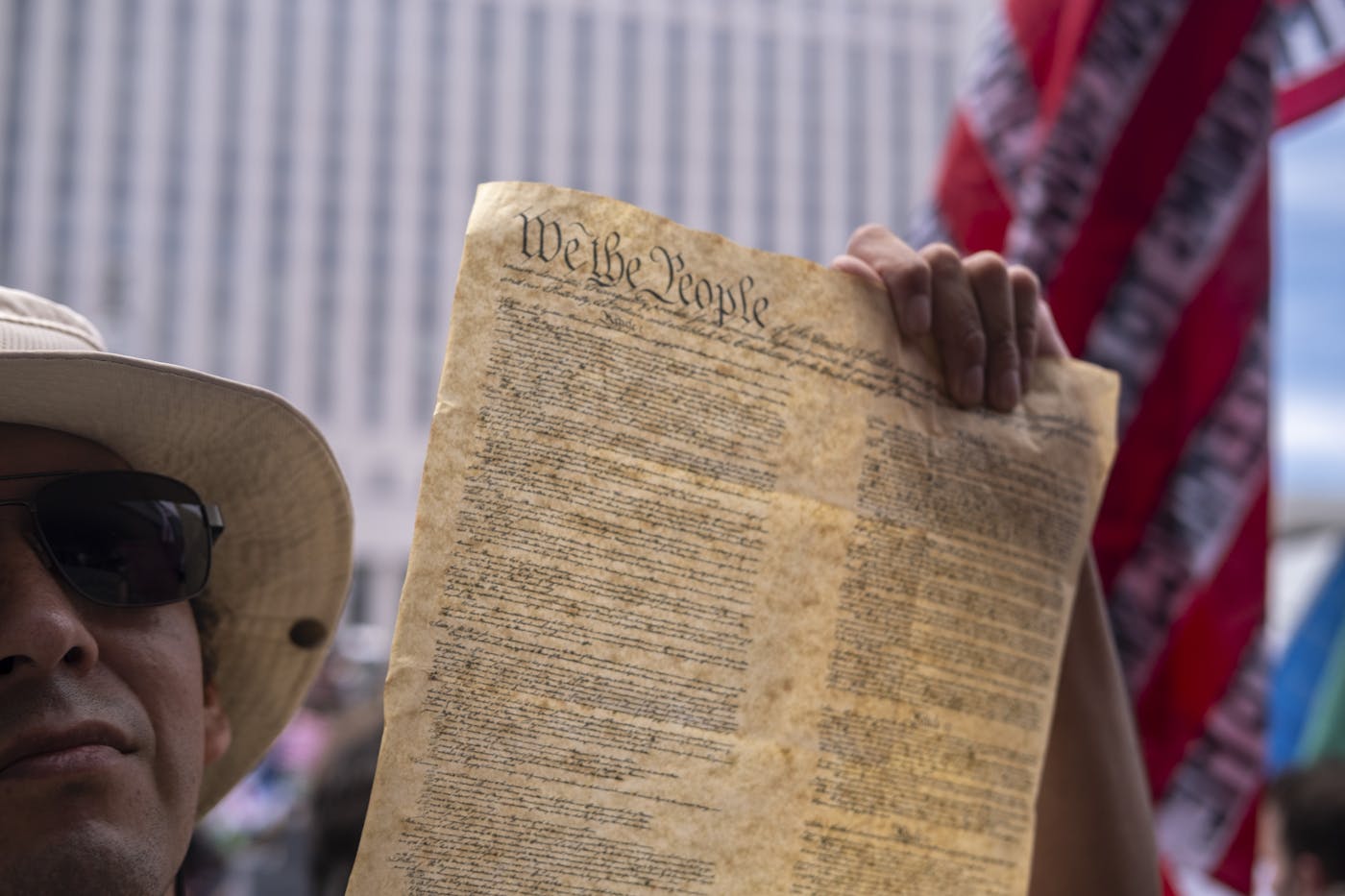
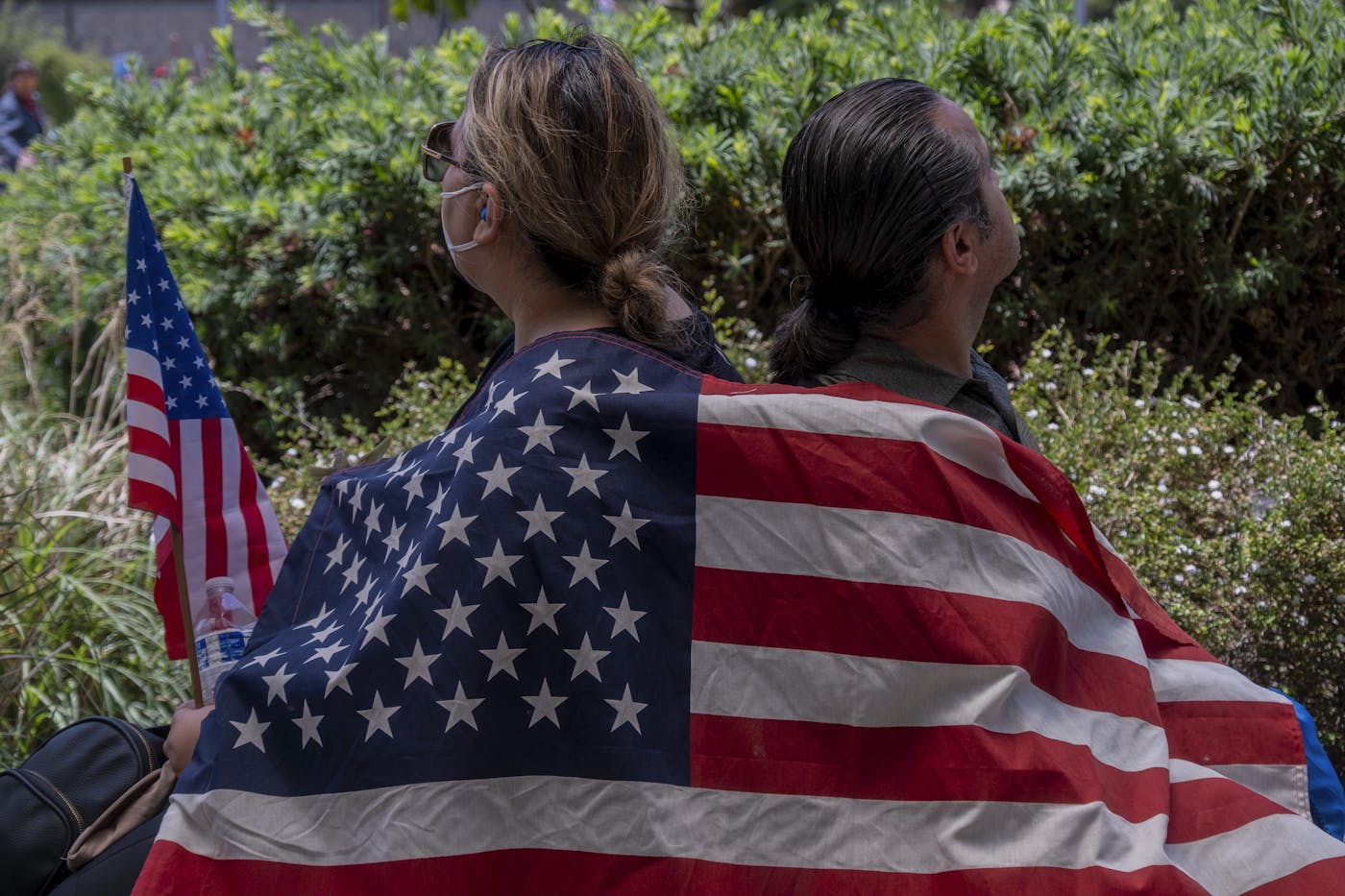
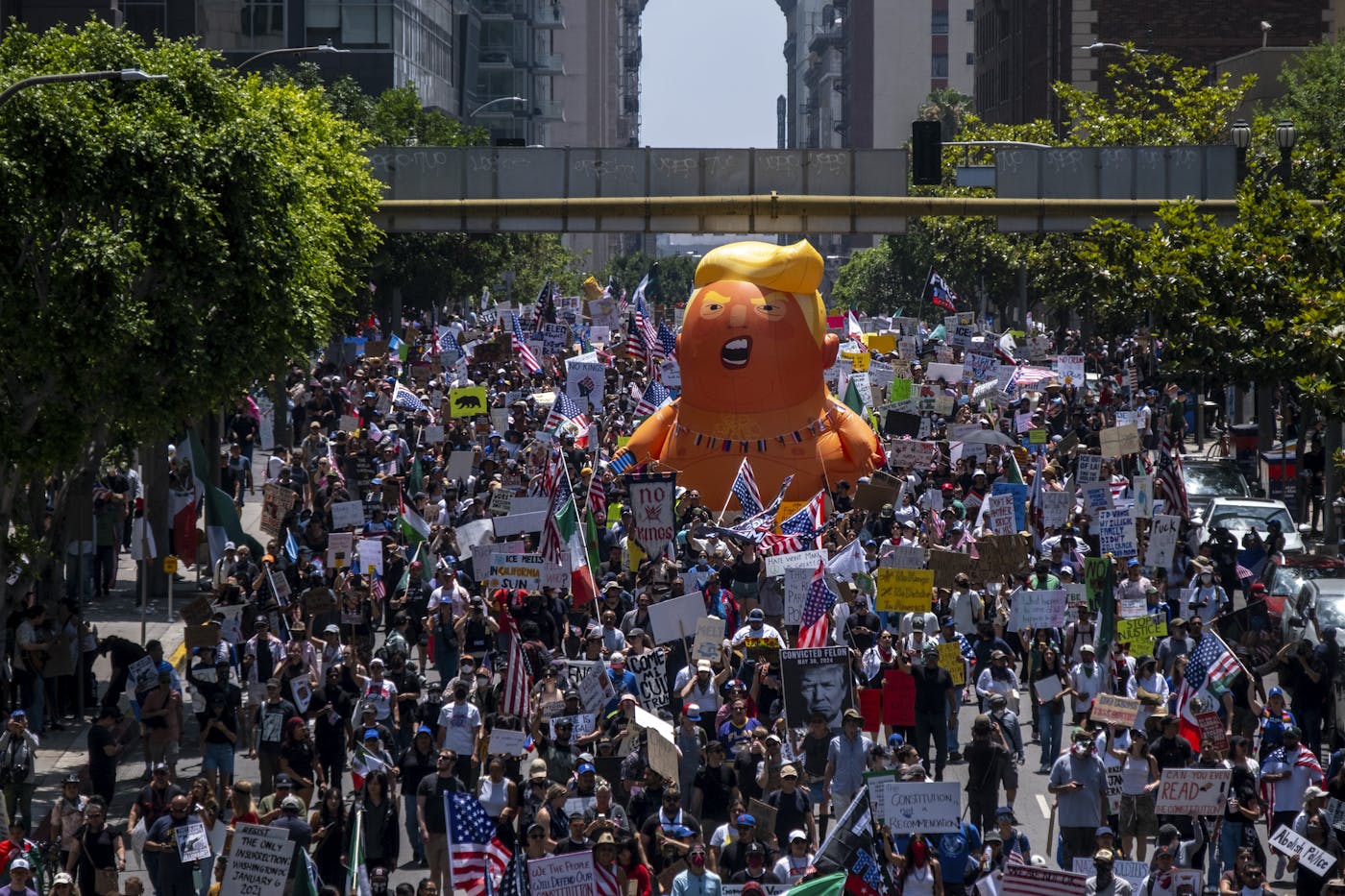
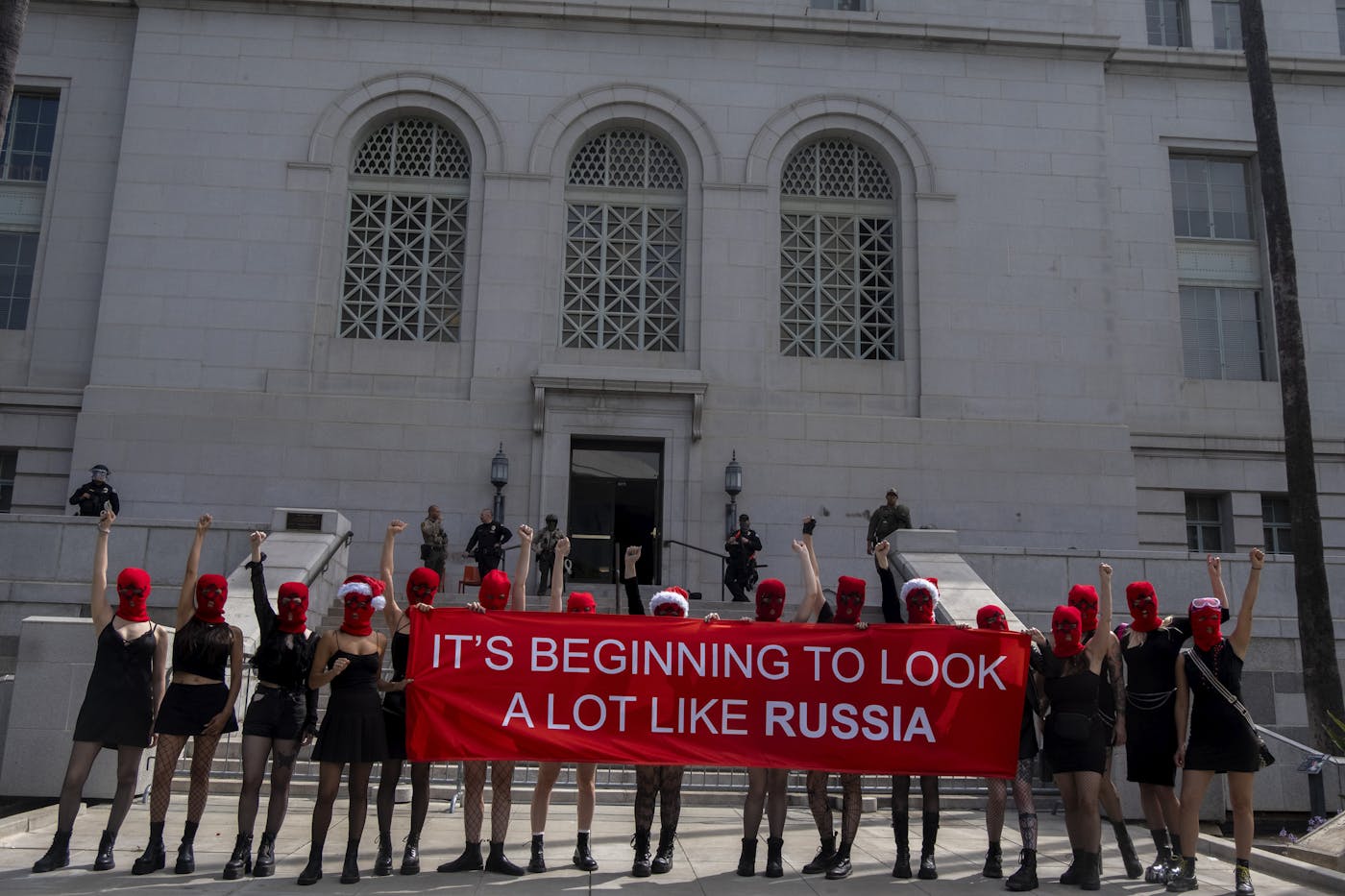
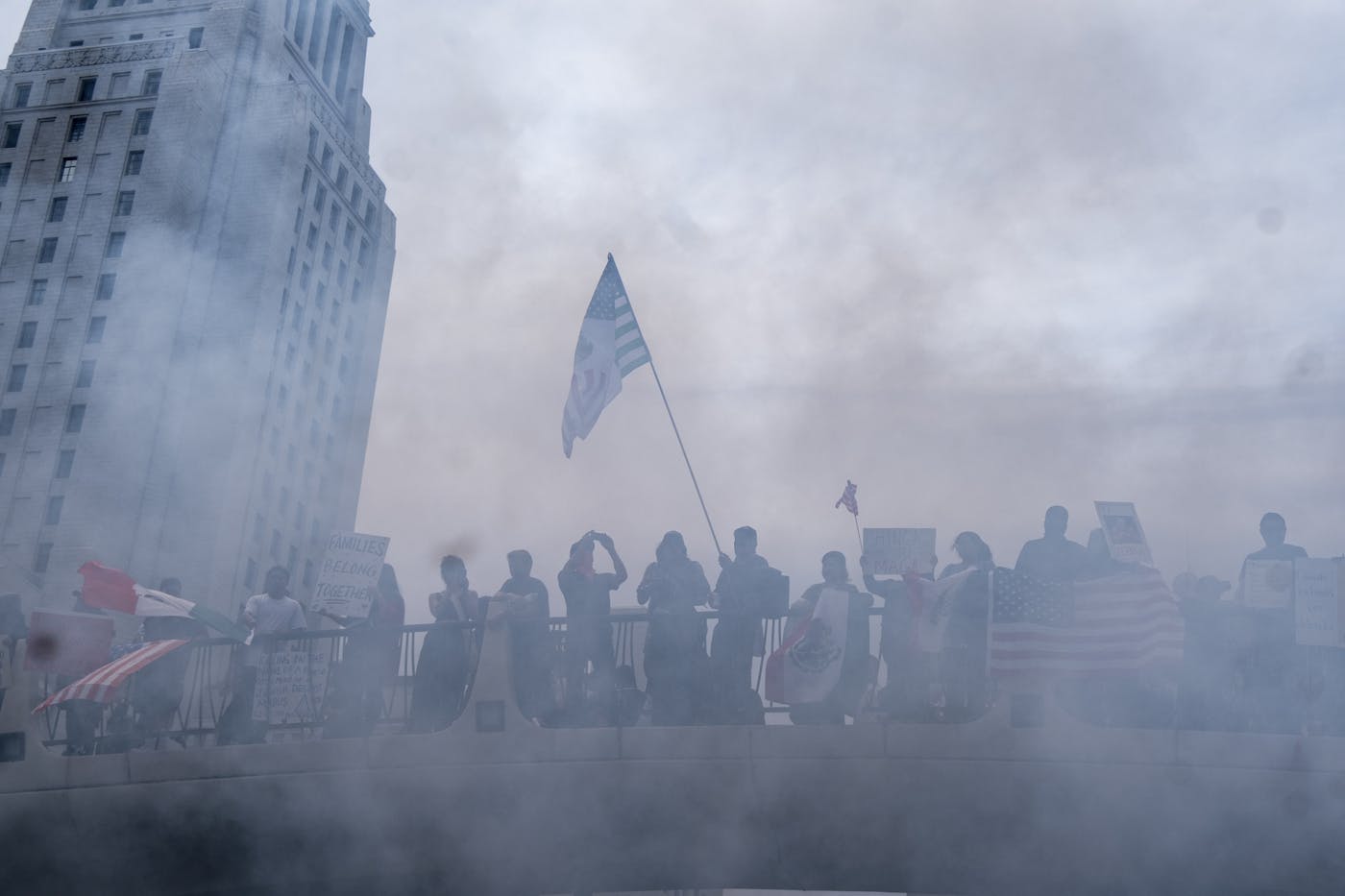
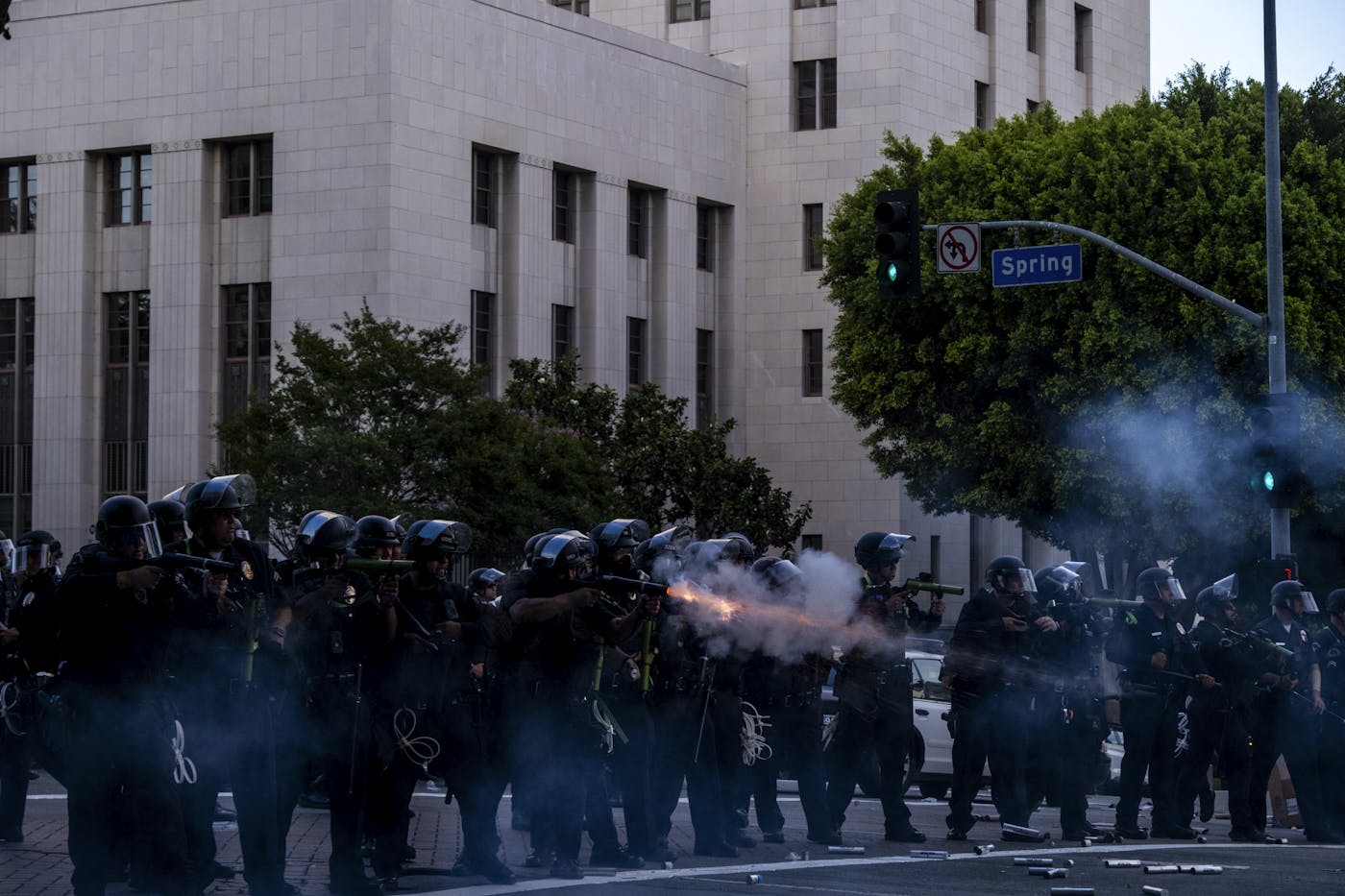
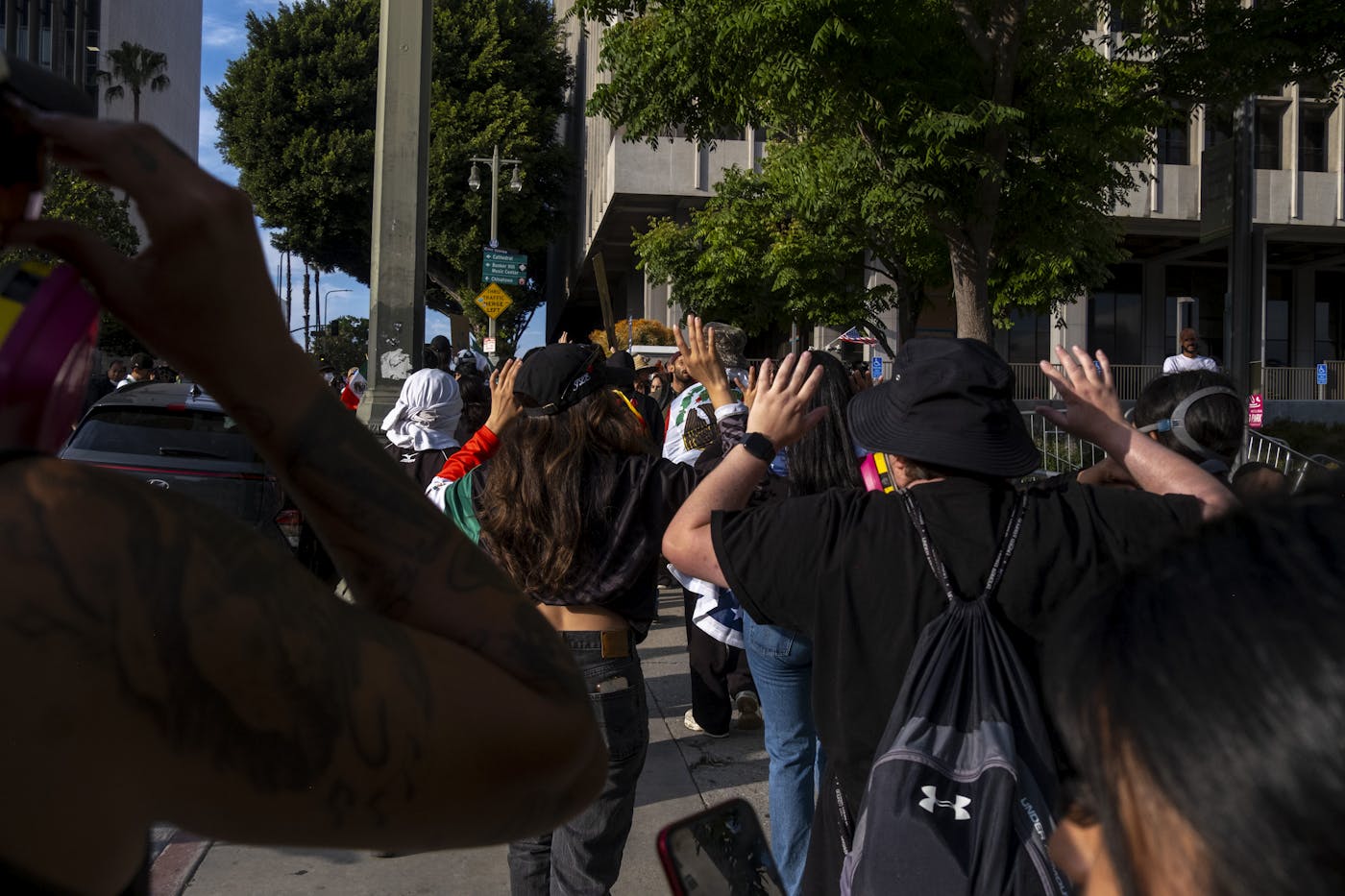
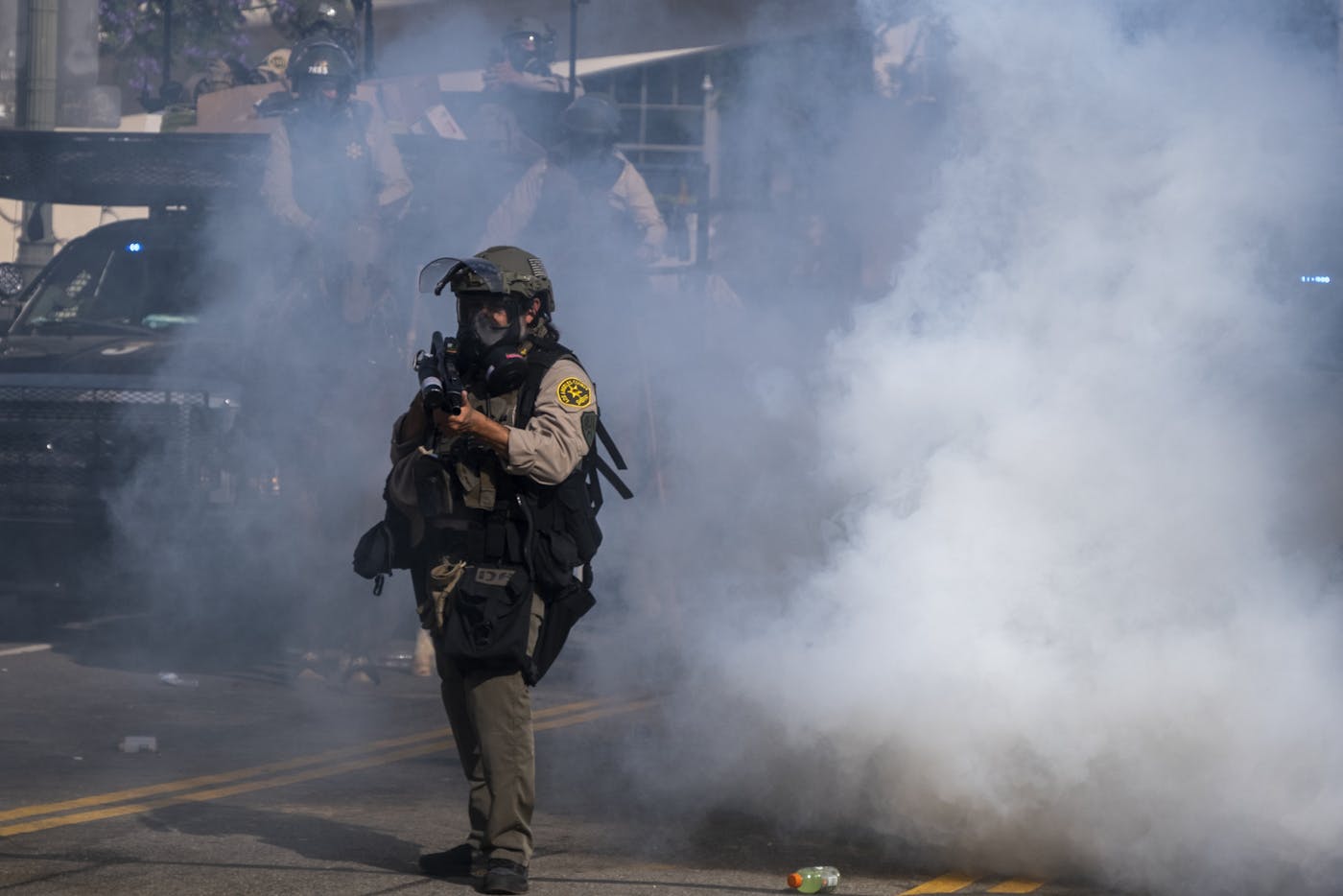
Ron Haviv has photographed more than 26 conflicts and worked in over 100 countries in the last three decades. He has documented American politics since 1988 and has photographed over 10 national conventions.
Libby, Montana
By photojournalist Aaron Agosto
I started my day in Libby, a small logging and mining town with a deeply conservative streak in the northwest corner of Montana. Members of a local militia group were among the first people I met when I showed up to the rally on California Avenue. The “Appeal to Heaven” militia decided to mobilize to the protest to “help keep the peace” after becoming concerned about what they were seeing online, their leader Ricky Gifford told me. Roughly half a dozen members or associates lingered around a pickup parked in the center of the rally, while over a hundred residents showed up to peacefully make their voices heard as part of the nationwide rally.
As the rally in Libby wound down, I drove south to Kalispell, where things were busier and the tension was more palpable. I arrived to a growing crowd of over 1,000 people, most carrying signs and some openly carrying guns. A handful of white supremacist agitators lurked around the perimeter while some locals drove past spewing diesel smoke and insults at the demonstrators. Inside the rally, speakers shared stories and musicians played for a large turnout in one of the reddest parts of the state.
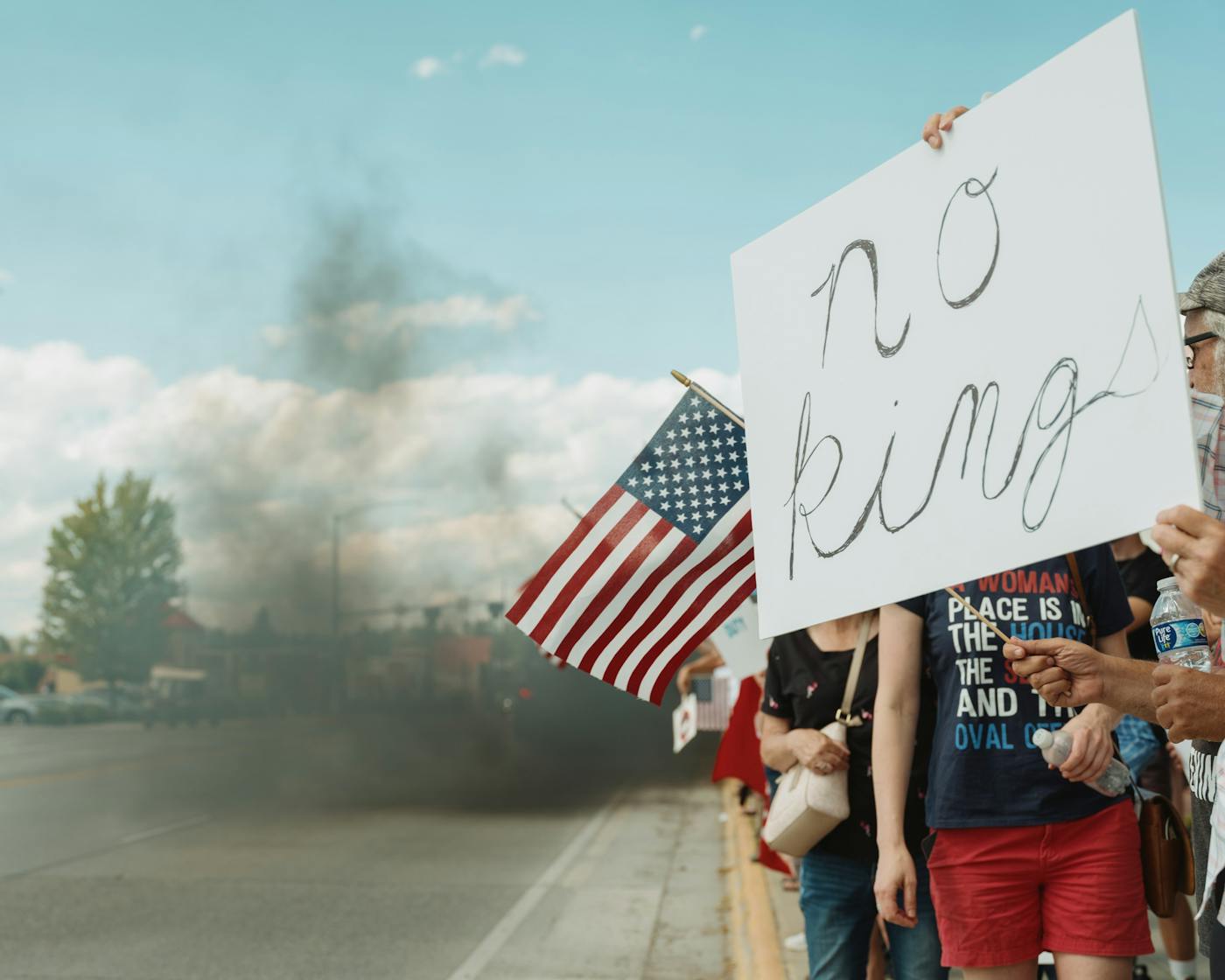

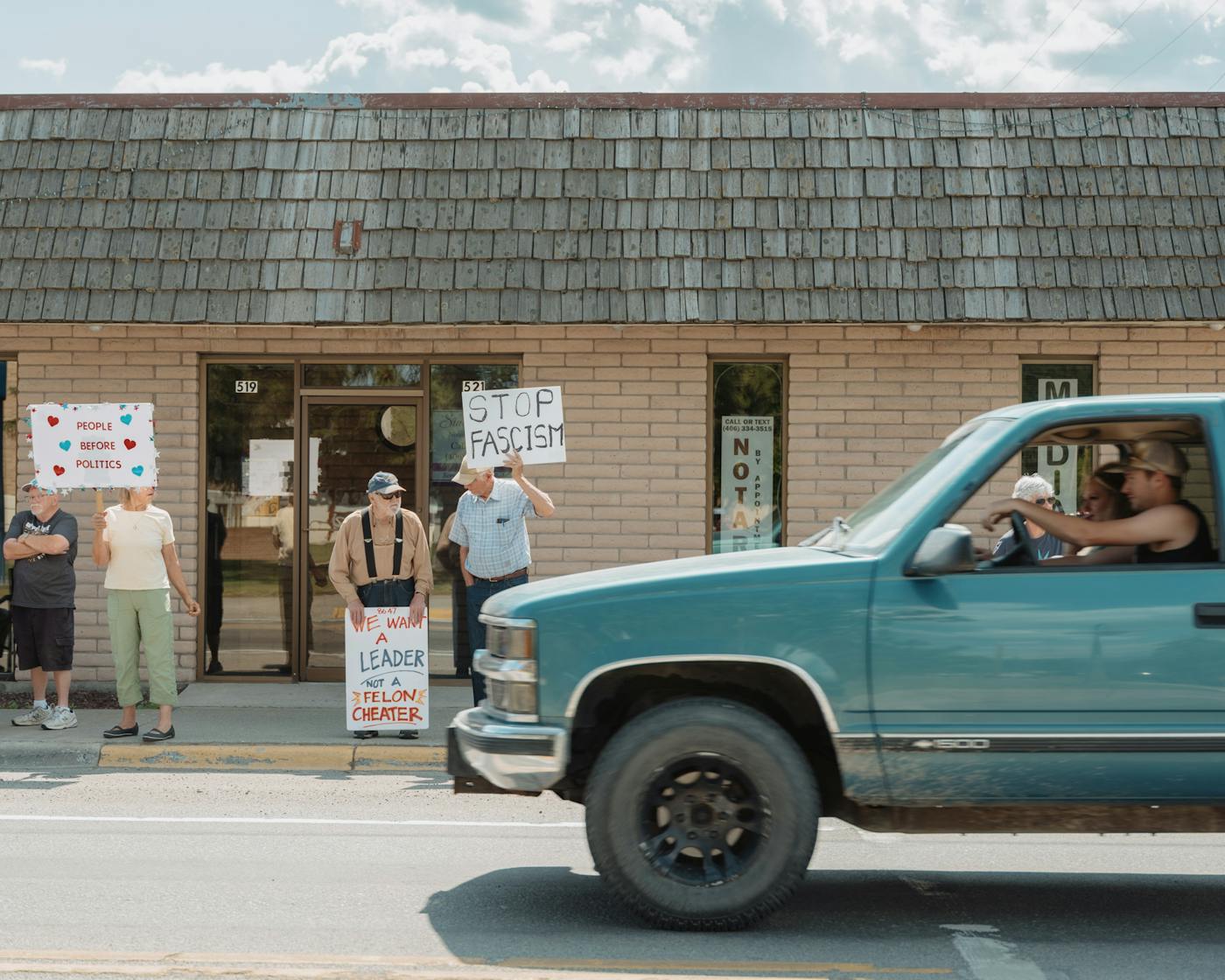
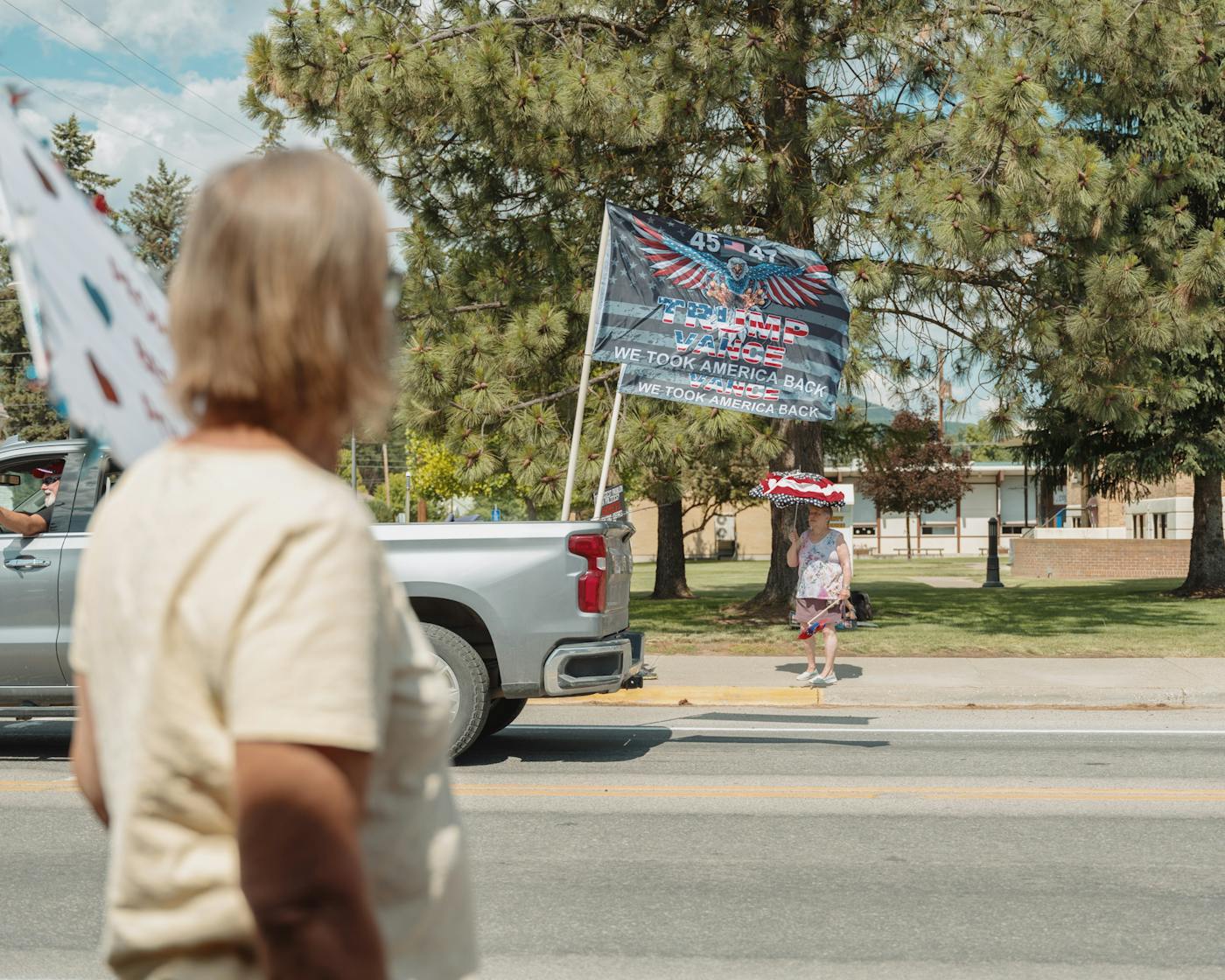

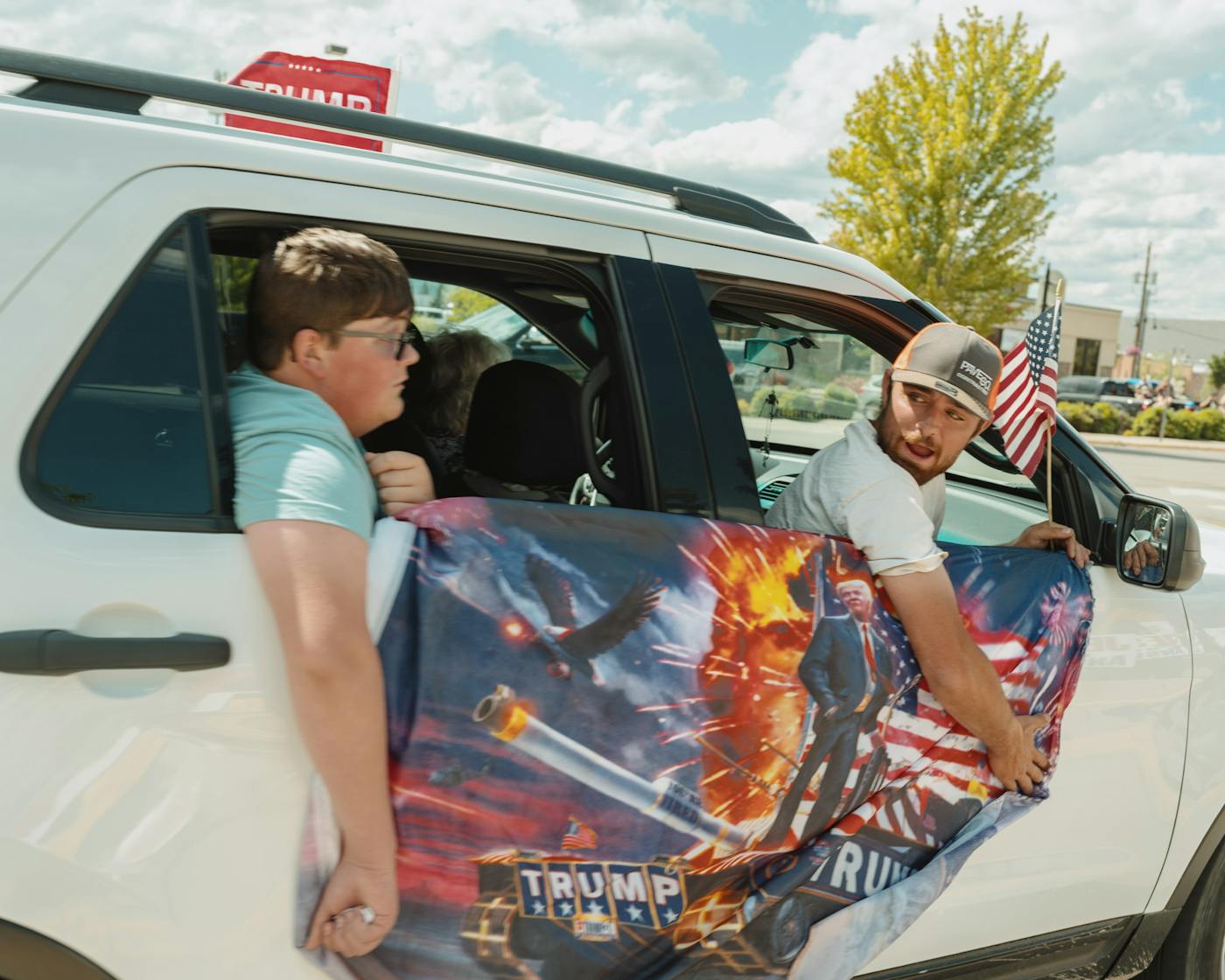
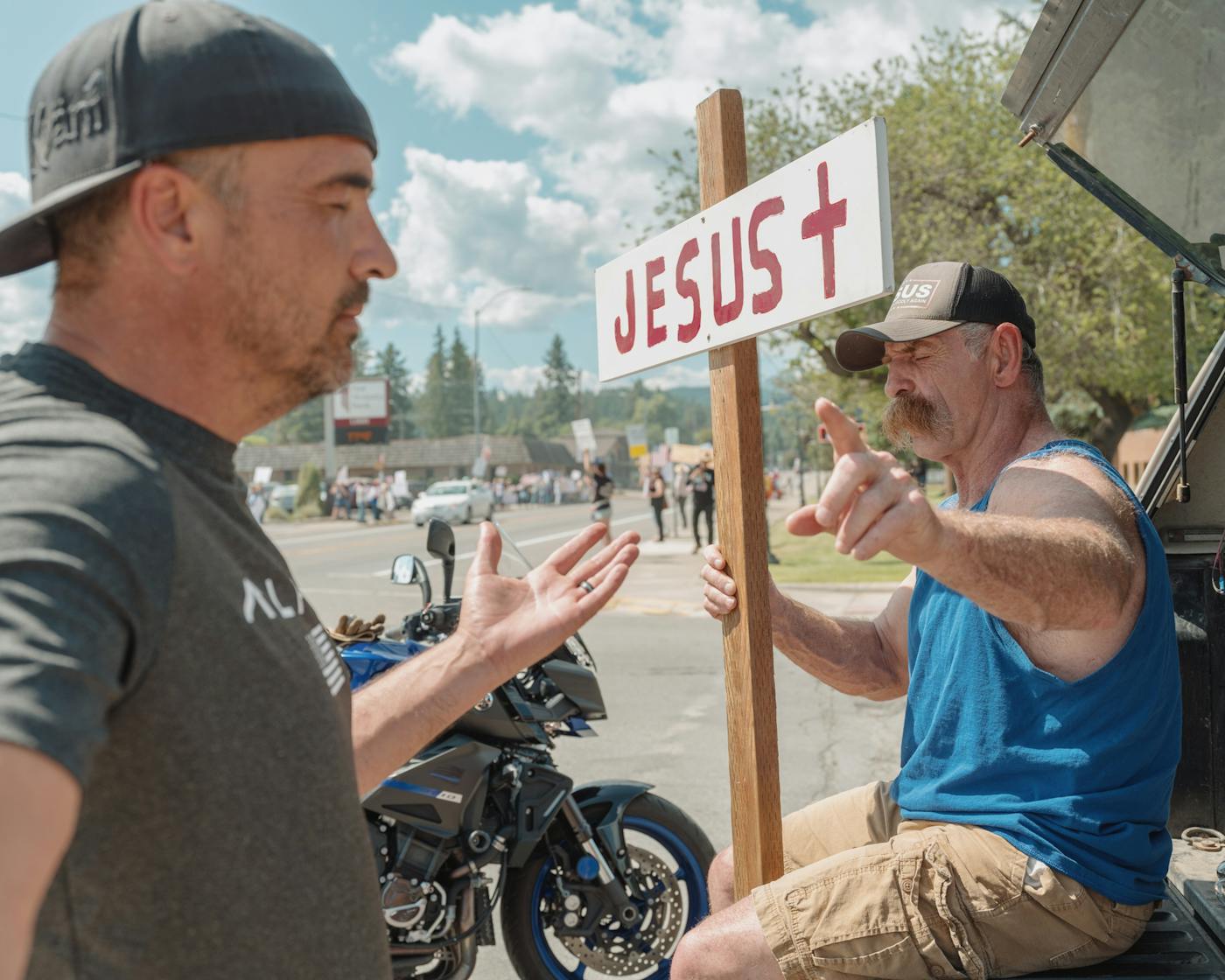
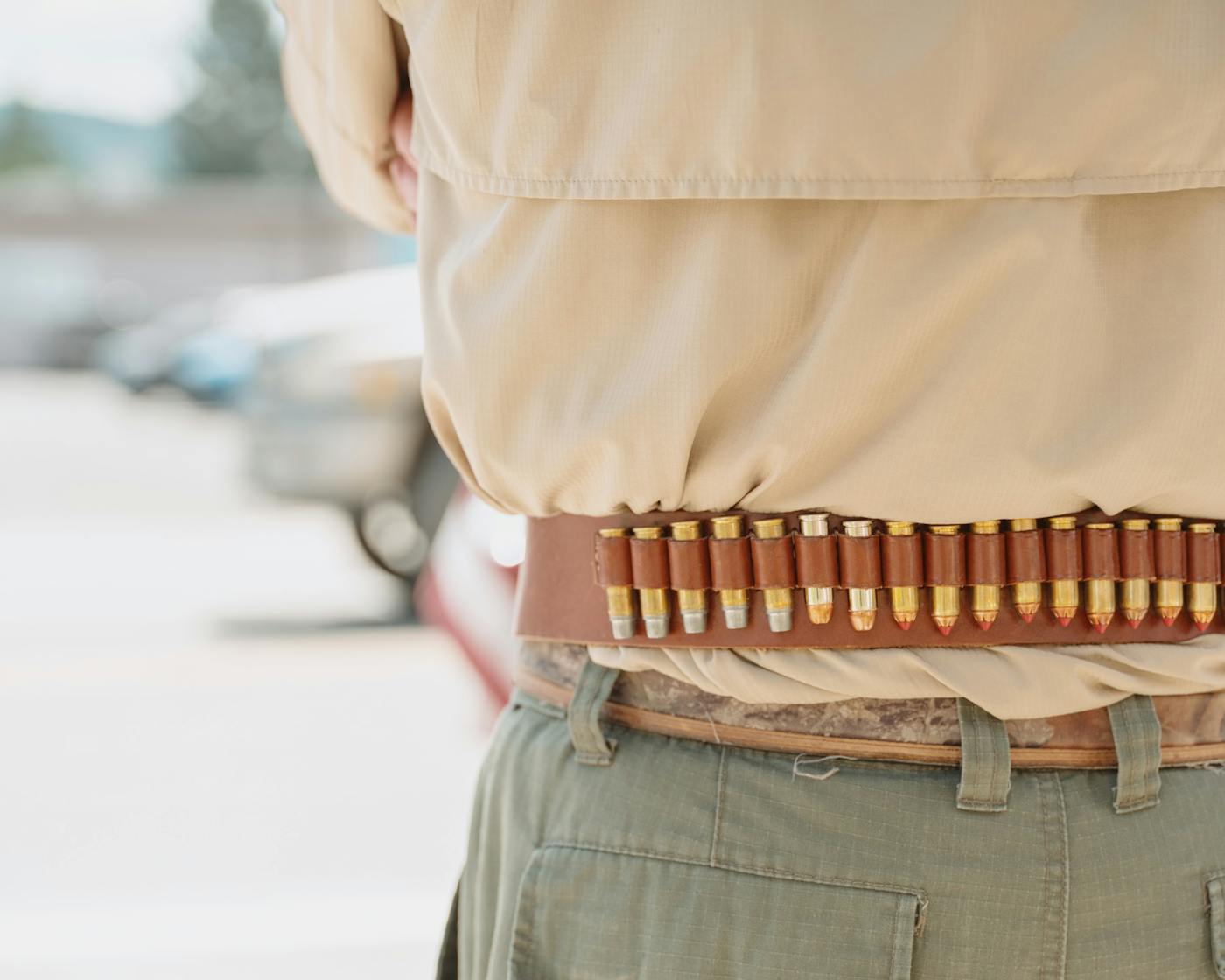
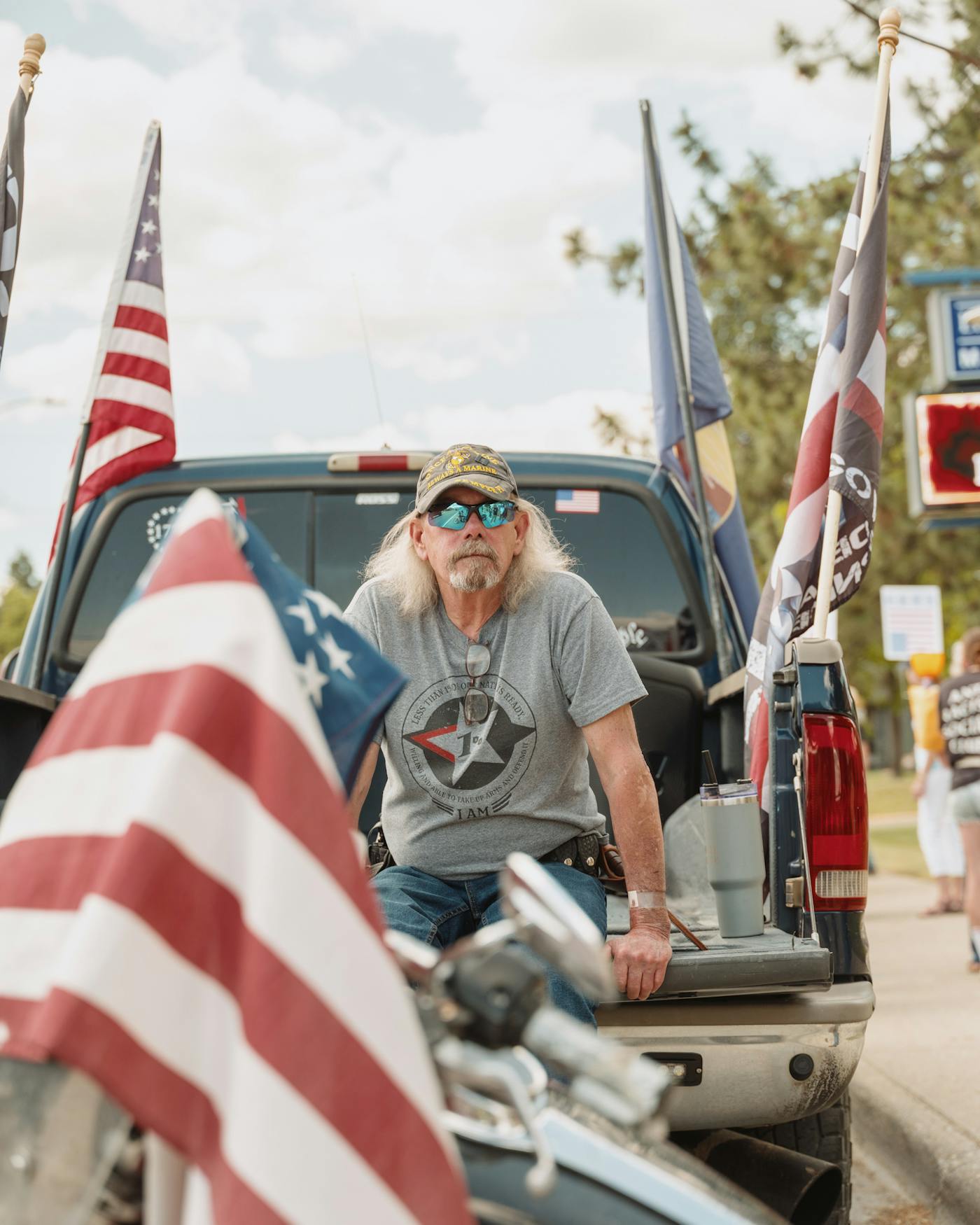

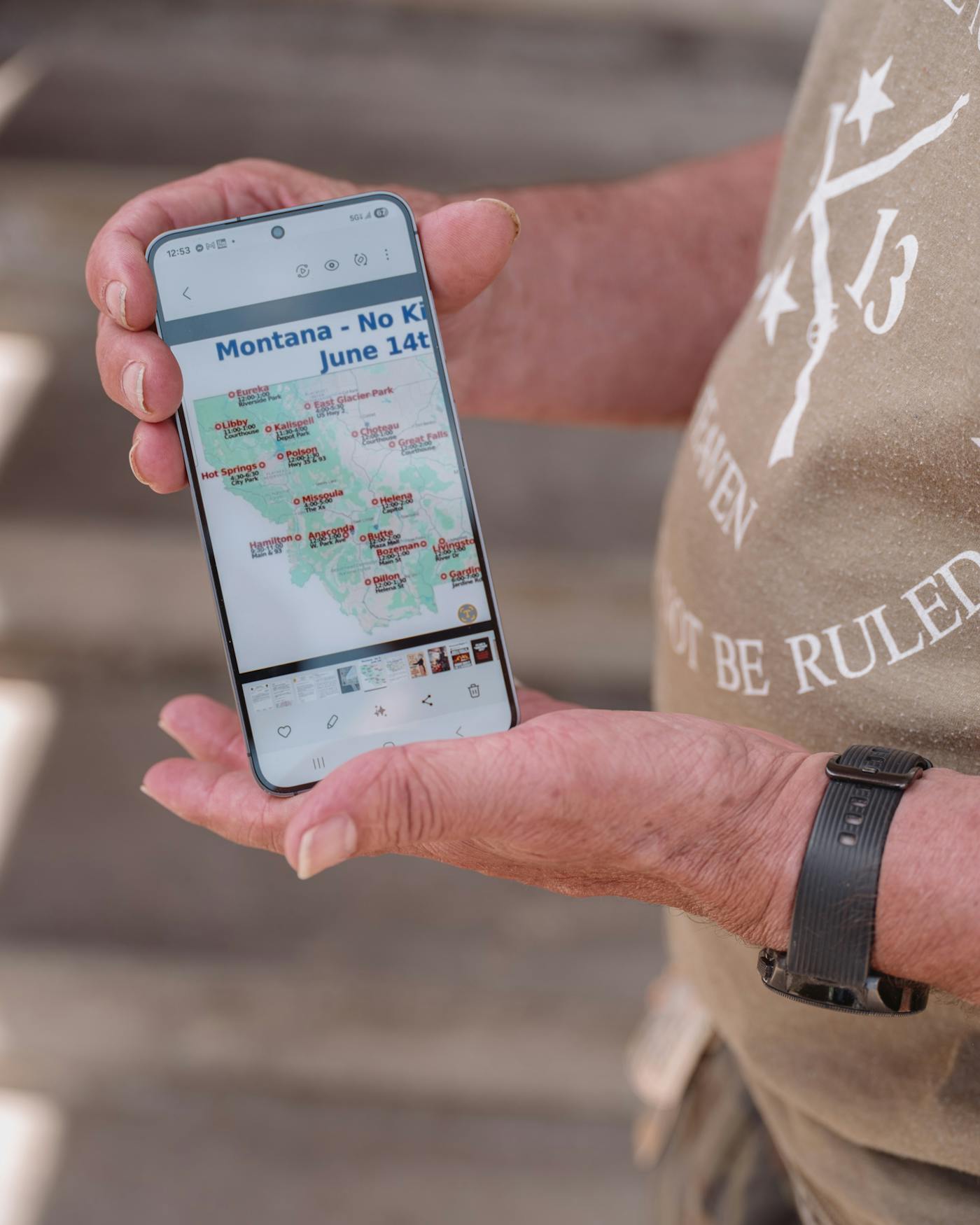
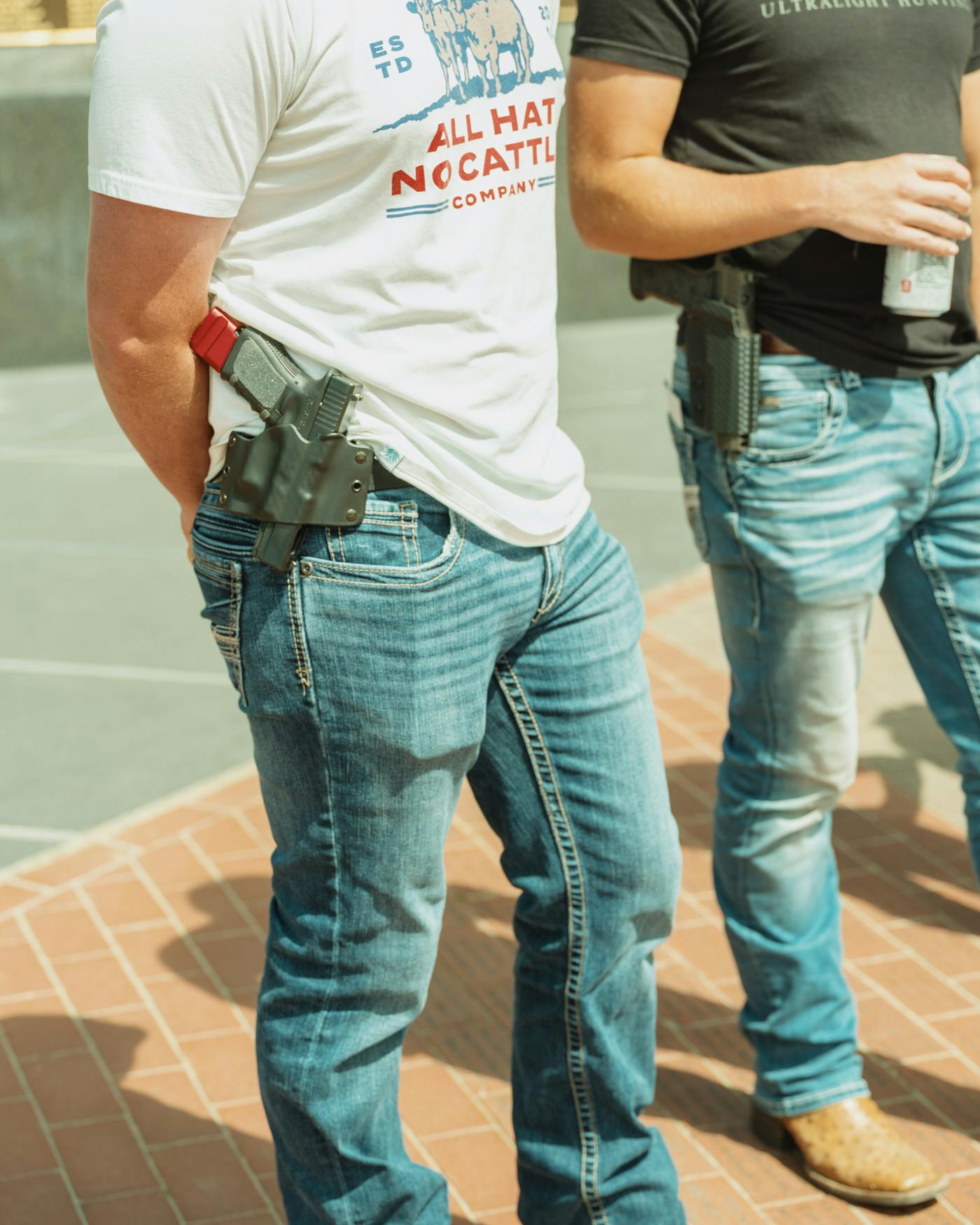

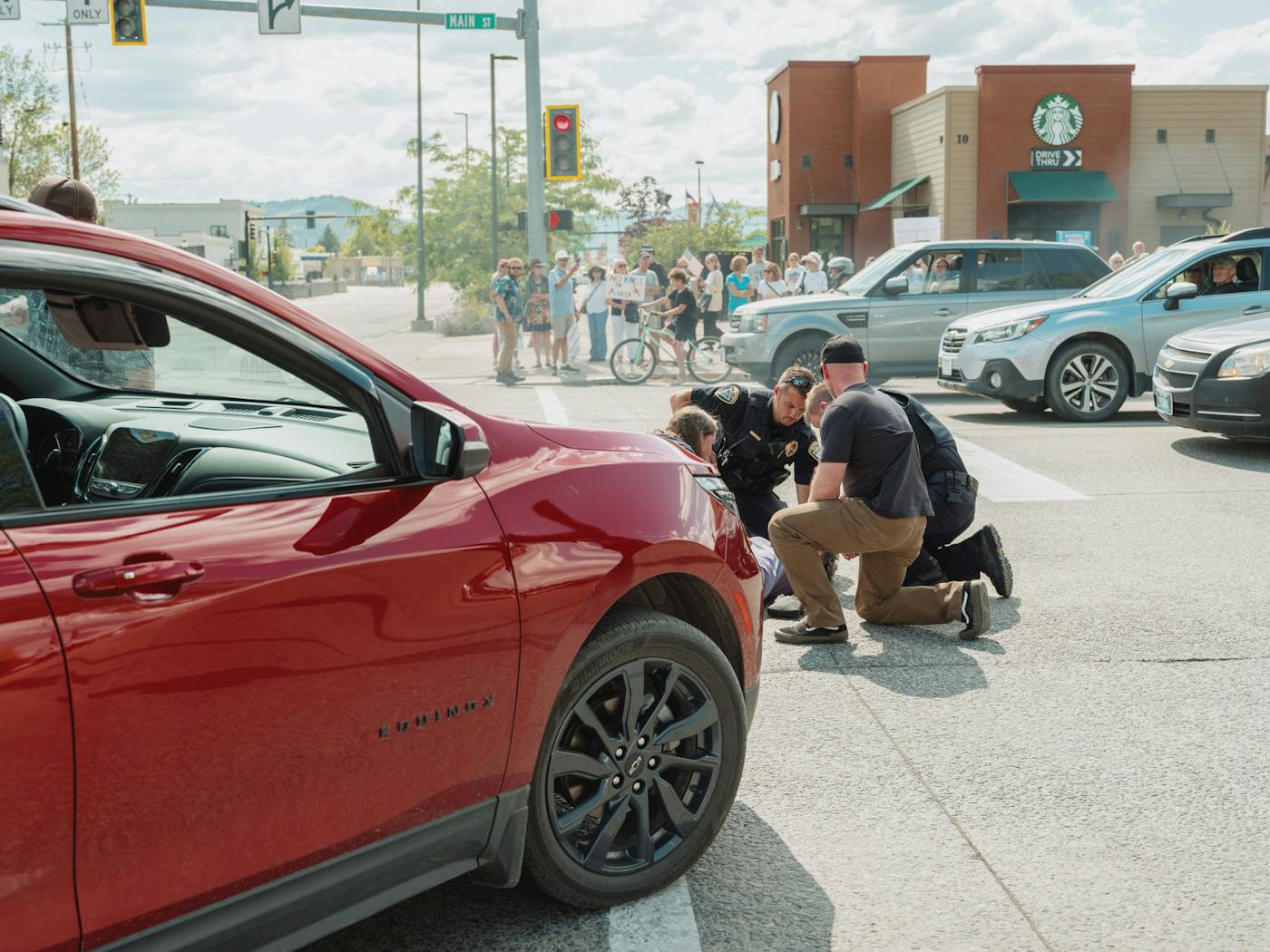

Aaron Agosto is a photojournalist living in Bigfork, Montana. His work been featured in The New York Times, ProPublica, and The Guardian.
Hendersonville and Shelby, North Carolina; Spartanburg, South Carolina
By photojournalist Jesse Ilan Kornbluth
On Saturday, I attended three separate No Kings rallies across Western North Carolina and upstate South Carolina—in Hendersonville and Shelby, North Carolina, and Spartanburg, South Carolina—each the county seat of reliably and deeply red counties. To my surprise, all three rallies were overwhelmingly peaceful, with minimal police presence. Aside from a small but loud group of pro-Trump counterprotesters in Hendersonville, I observed little tension between No Kings protesters and others. From speaking with locals, it seems that many would-be counterprotesters from smaller towns in the region traveled to larger, bluer cities hosting No Kings rallies (Charlotte, Asheville, Greenville, Atlanta, etc.). Hendersonville and Spartanburg both drew surprisingly large, highly multicultural crowds spanning a wide age range. Both were extremely well planned and executed, with professional audio, speeches, and music. Shelby’s rally was smaller and more low-tech. Overall, I was equally surprised by both the turnout and the lack of disruptive counterprotesters.


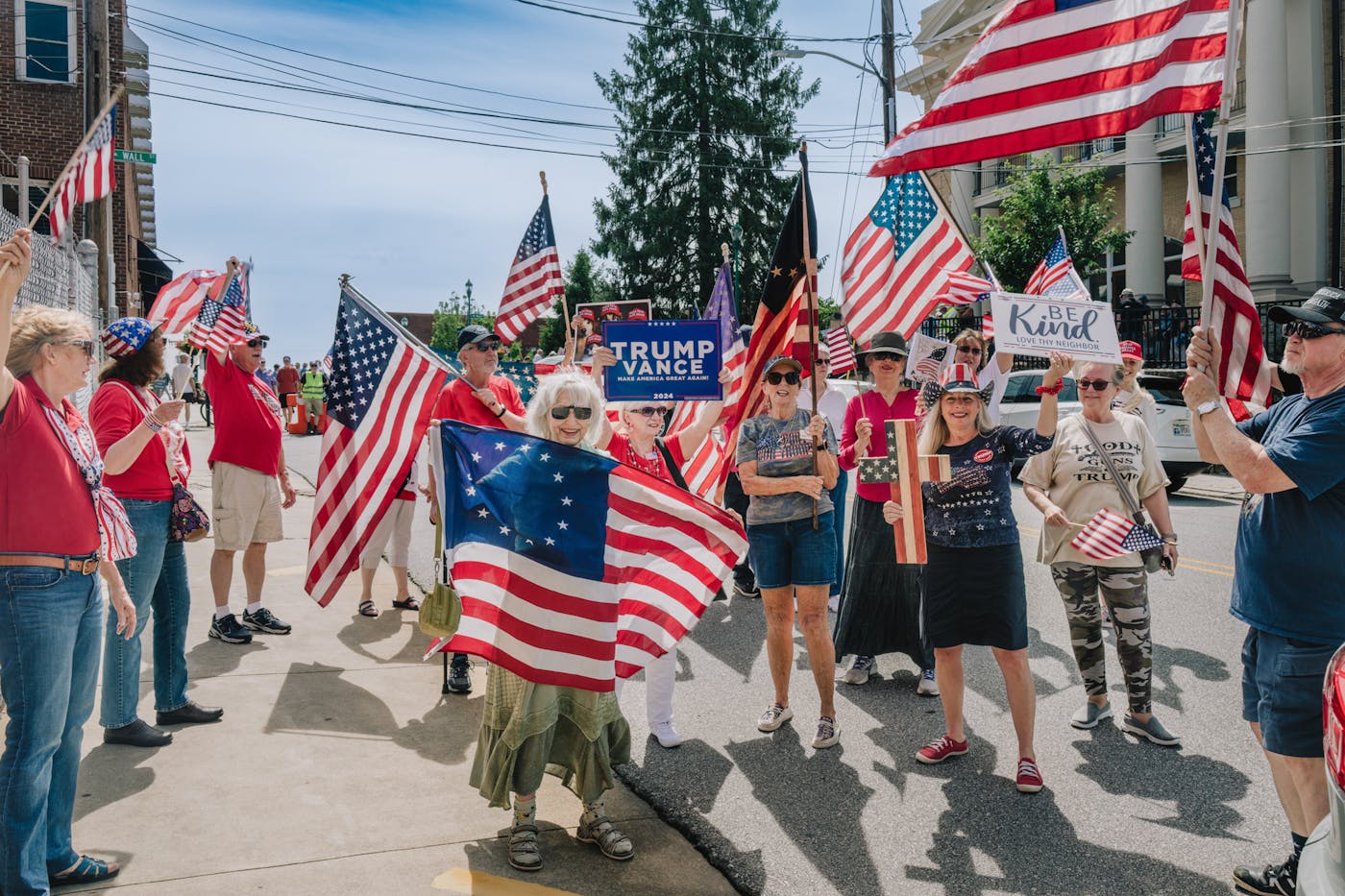


Jesse Ilan Kornbluth is a photojournalist who earned a master’s in international relations with a specialization in conflict resolution before studying at the International Center of Photography in NYC.
New York City
By photojournalist Paola Chapdelaine
The crowd during the No Kings protest was quite massive compared to recent protests I’ve experienced. I was there a couple weeks ago for the “Hands Off!” rally—equally rainy! The atmosphere throughout the day was peaceful, and the crowd was full of families. There was a kind of defiant joy in the air—illustrated by a New Orleans–style funeral second line (which I didn’t personally witness) and others playing music on loudspeakers.Things became more tense as I made my way to 26 Federal Plaza, where the ICE Immigration Court is located. A group of protesters tried to approach the heavily barricaded building, which was guarded by dozens of NYPD officers. Several arrests took place, mostly of people who ignored police orders to stay out of restricted areas. There were a lot of insults being shouted at individual NYPD officers. The crowd got progressively smaller, and the number of NYPD officers around felt significant in comparison. Among those arrested was a member of the press. According to witnesses, he had asked for and received permission to cross a section of the street, only to be grabbed and handcuffed by another officer moments later. His camera and belongings were confiscated, though the exact circumstances aren’t entirely clear to me.
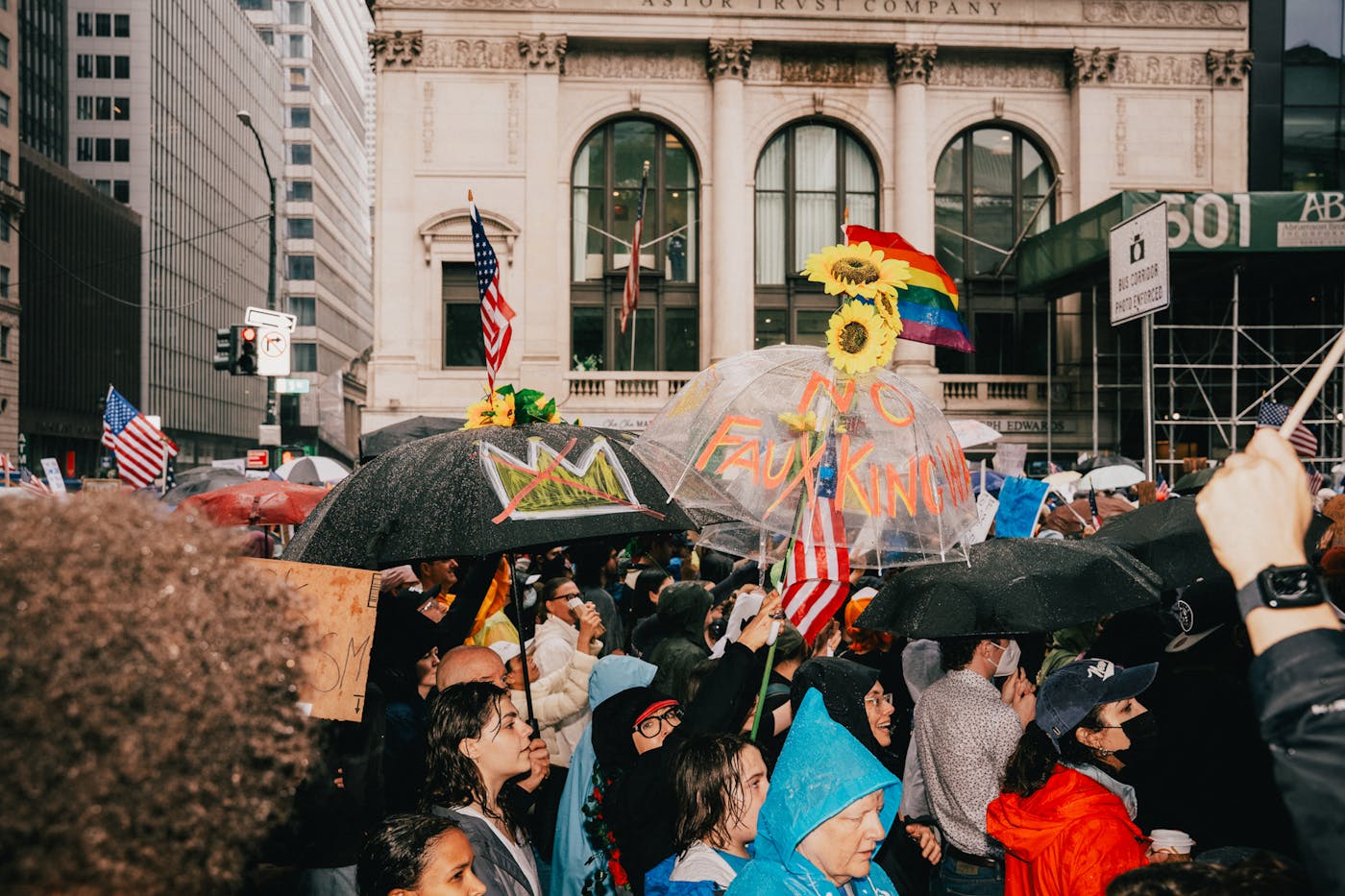



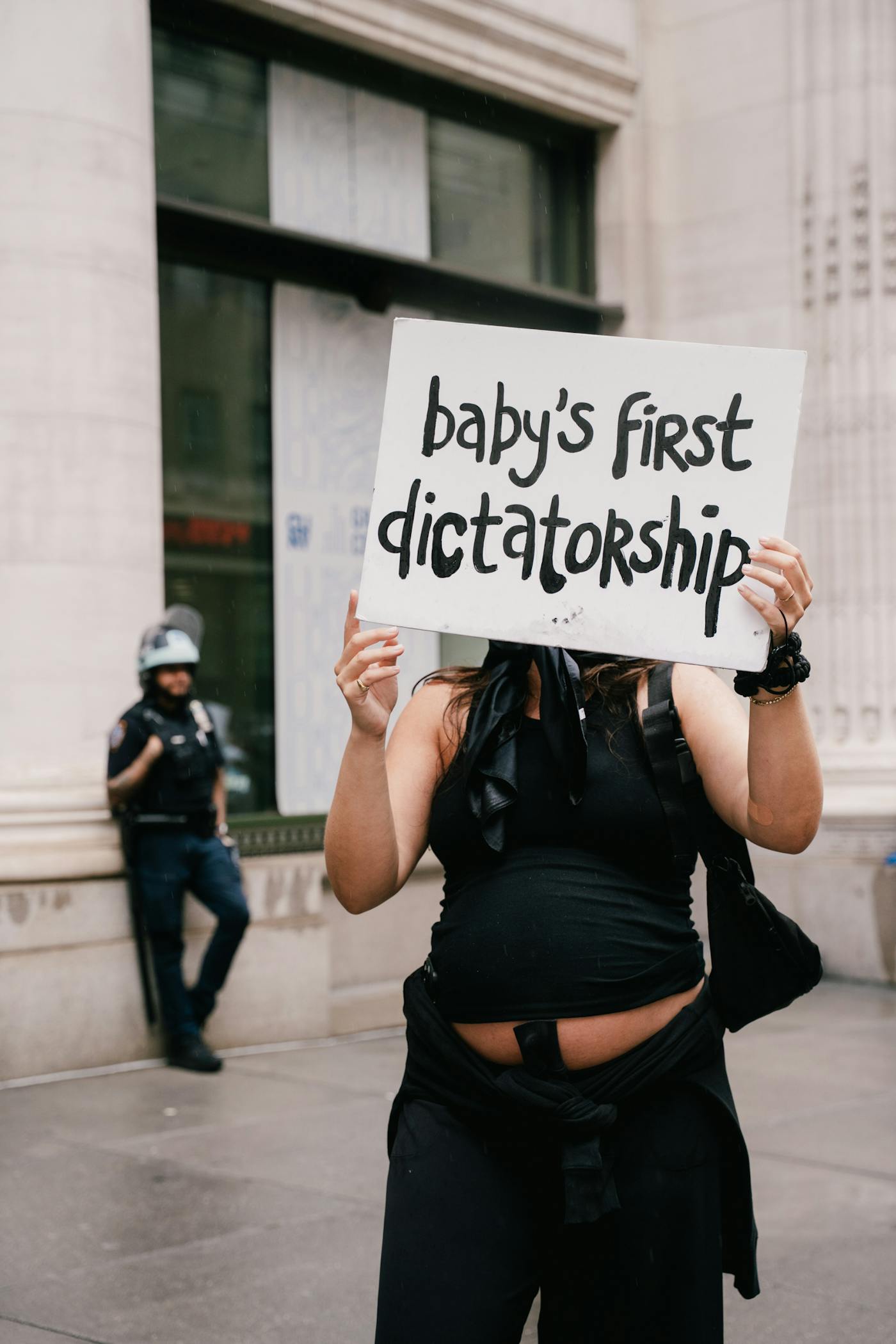
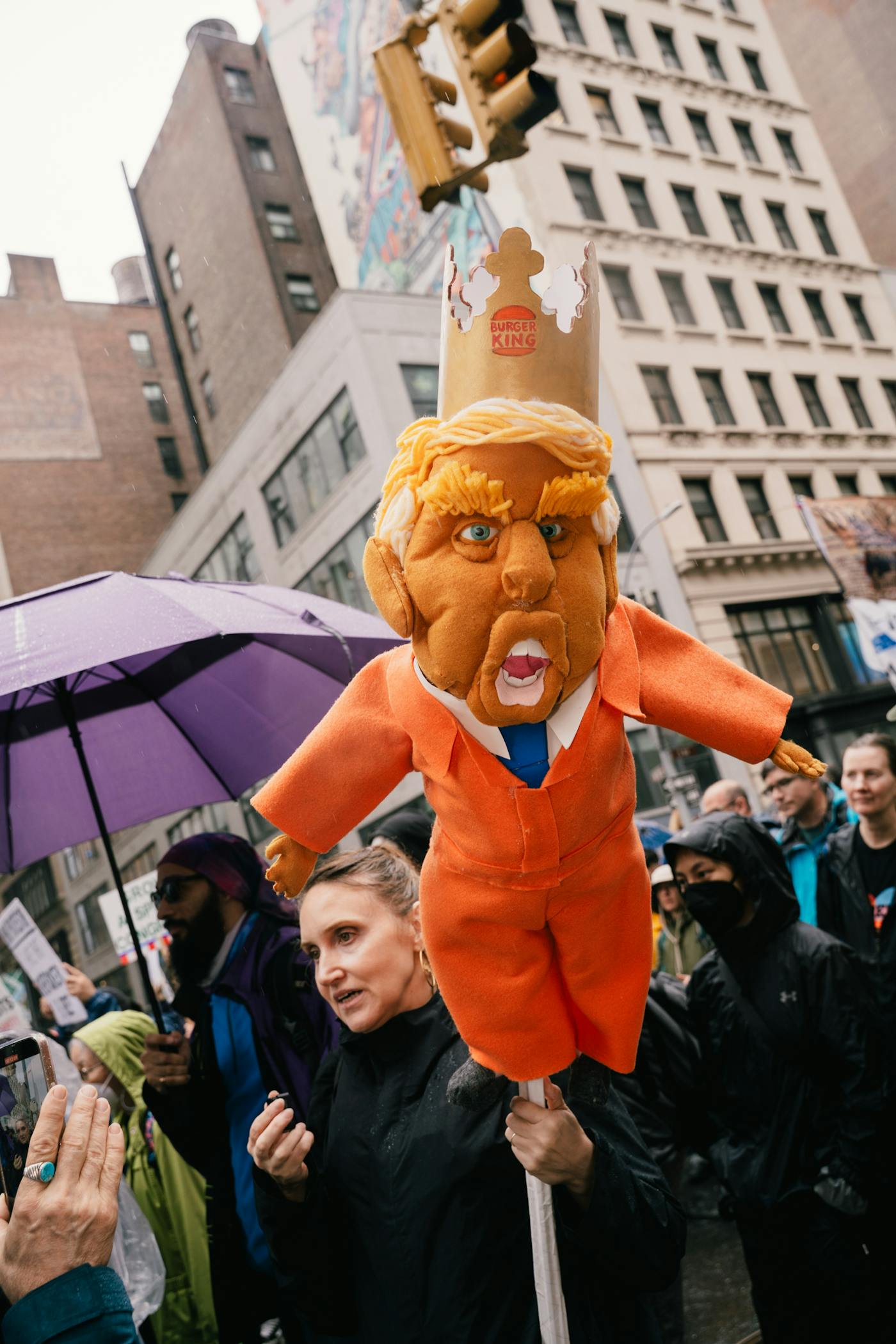
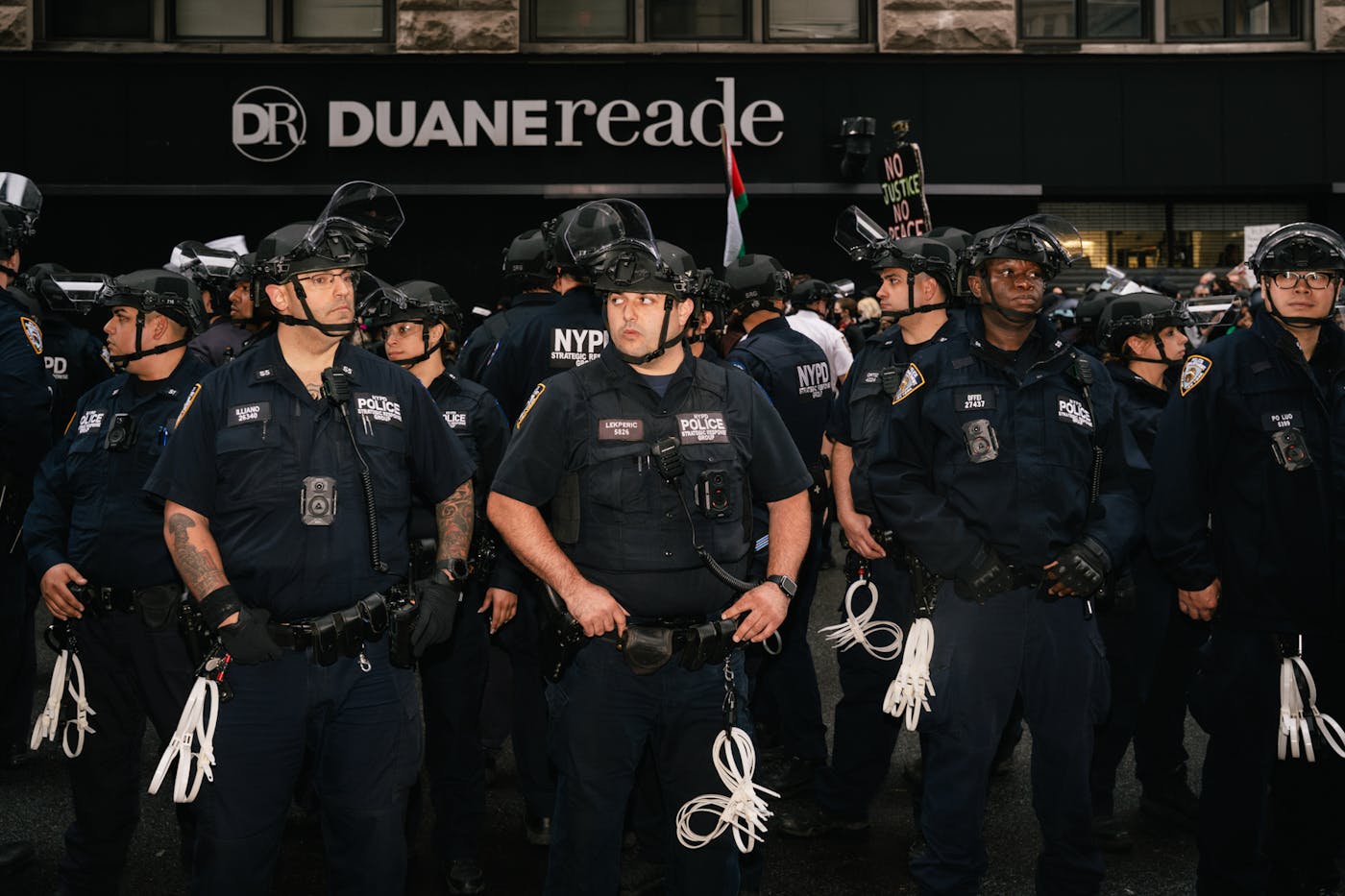
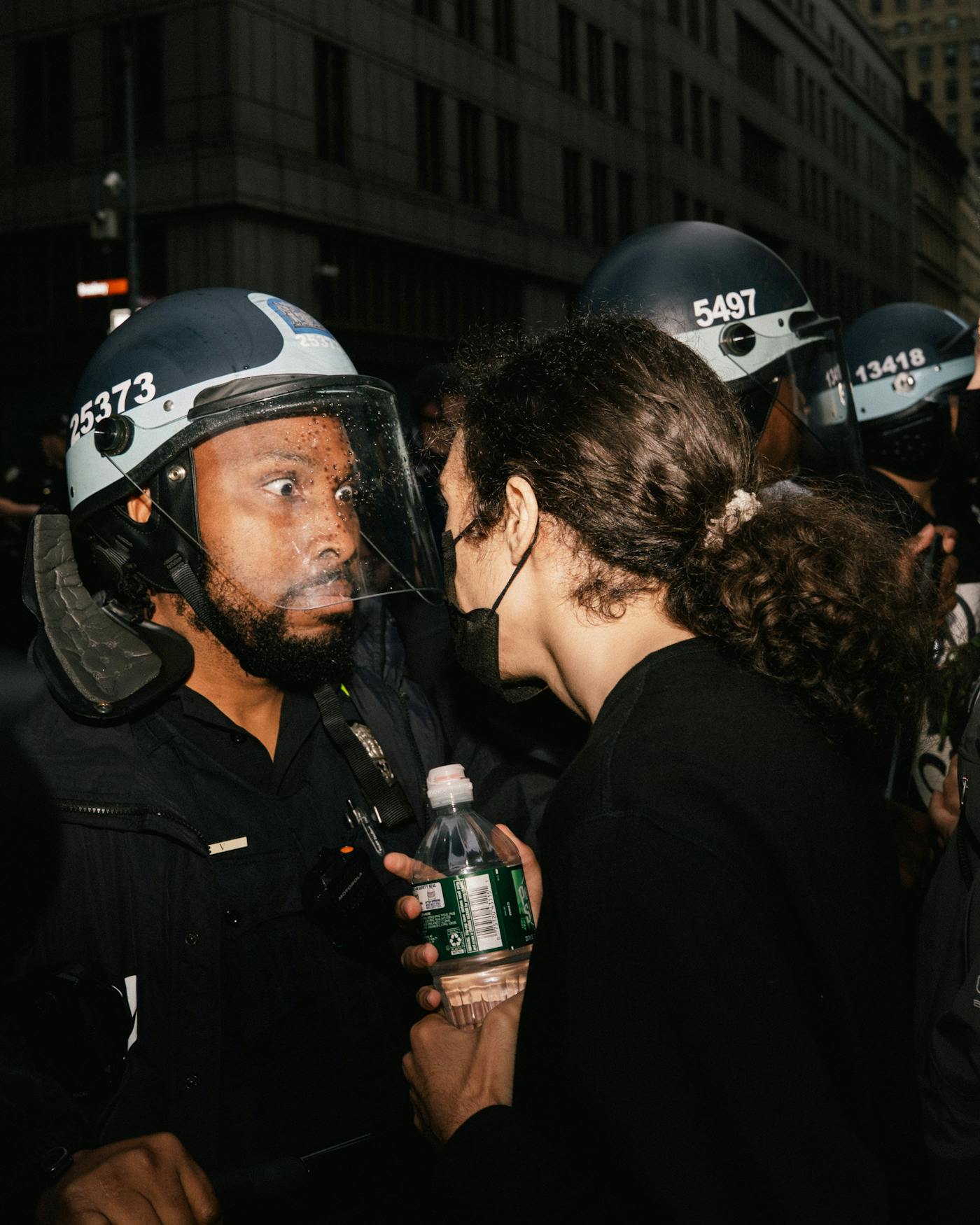
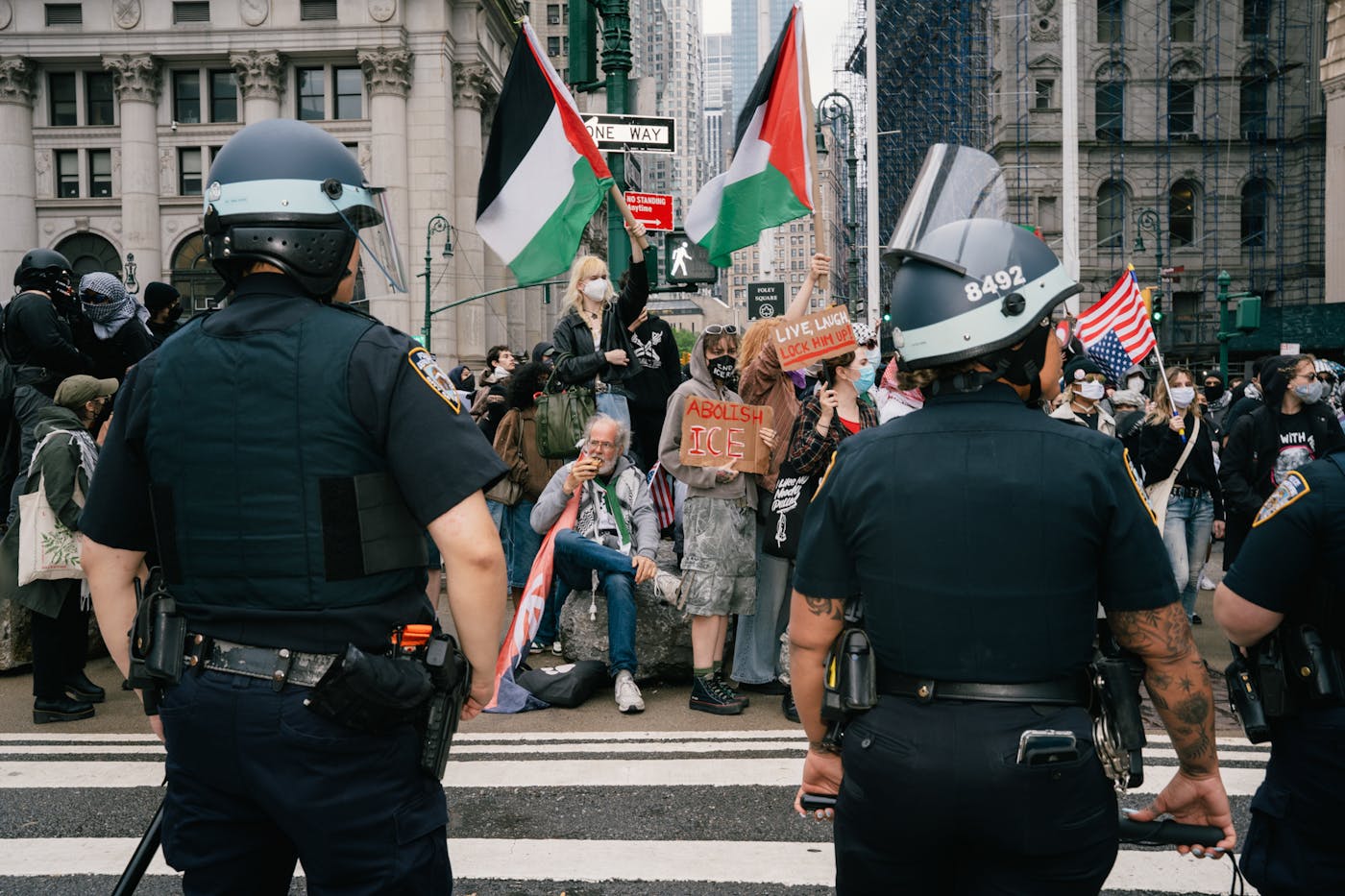
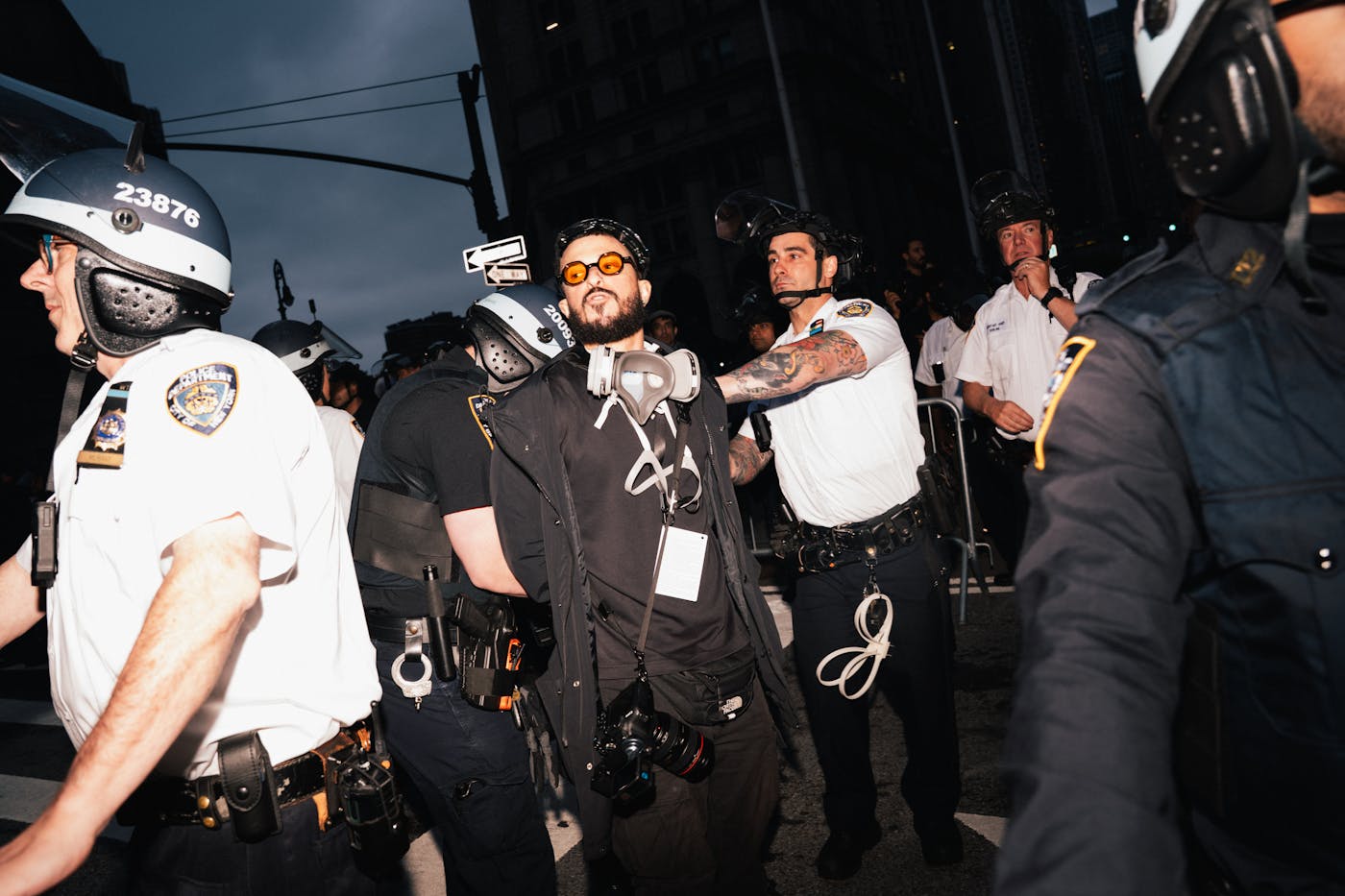
Paola Chapdelaine is a French photojournalist and documentary photographer based in New York City. She has worked on a variety of topics, including the American political divide, gun violence, women’s empowerment, and local climate stories.
Washington D.C.
By photojournalist Henry Villarama
I had the honor of photographing the U.S. Army’s 250th Birthday celebration for The New Republic.
This opportunity held particular significance for me, as I undertook a freelance assignment to cover such a momentous occasion. Having dedicated 11 years to military service and two years as an Army civilian, I felt a great sense of pride. My objective was to represent the diverse experiences of all attendees, regardless of their perspectives on the event.
What caught me off guard was seeing a group of protesters near the entrance, loudly criticizing the commander in chief at an event meant to celebrate the Army. It was jarring at first as someone who’s served and worn the uniform. But it quickly reminded me that protecting freedom of speech, even the kind that challenges us, is part of what we sign up to do.
The day proved to be a success, with individuals coming together to honor the Army and its rich history while also remembering those who have made the ultimate sacrifice.
In addition to the Army’s celebration, the event coincided with President Donald Trump’s 79th birthday. As an observer of the parade, I did not perceive any particularly notable references to the president, aside from the vice president’s mention during the introduction.
The parade itself vividly represented American values, with spectators expressing their enthusiasm, aircraft flyovers, parachutists, and troops and military equipment proceeding down Constitution Avenue.
As the celebration ended, I was left with a profound sense of reflection. The juxtaposition of honoring the Army’s legacy while remembering those who sacrificed everything was emotional. I thought of my camp first sergeant when I was deployed to Camp Integrity in Kabul, Sgt Peter “Andrew” McKenna. On Aug 7, 2015, we were attacked and he led the defense of our base. He was killed in a firefight at the breaching point into our compound of Army 1st. His bravery and selflessness are a poignant reminder of the actual cost of freedom.
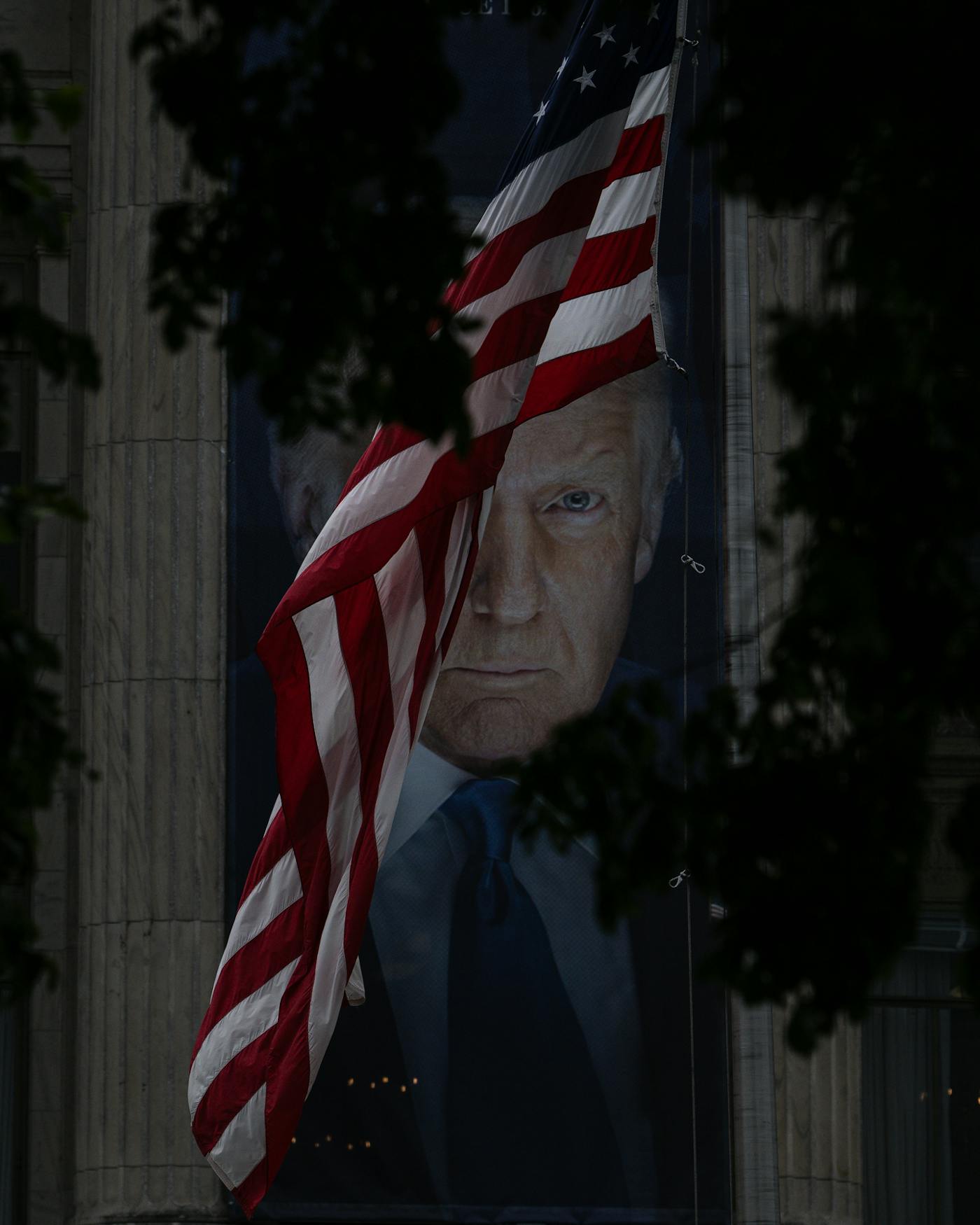

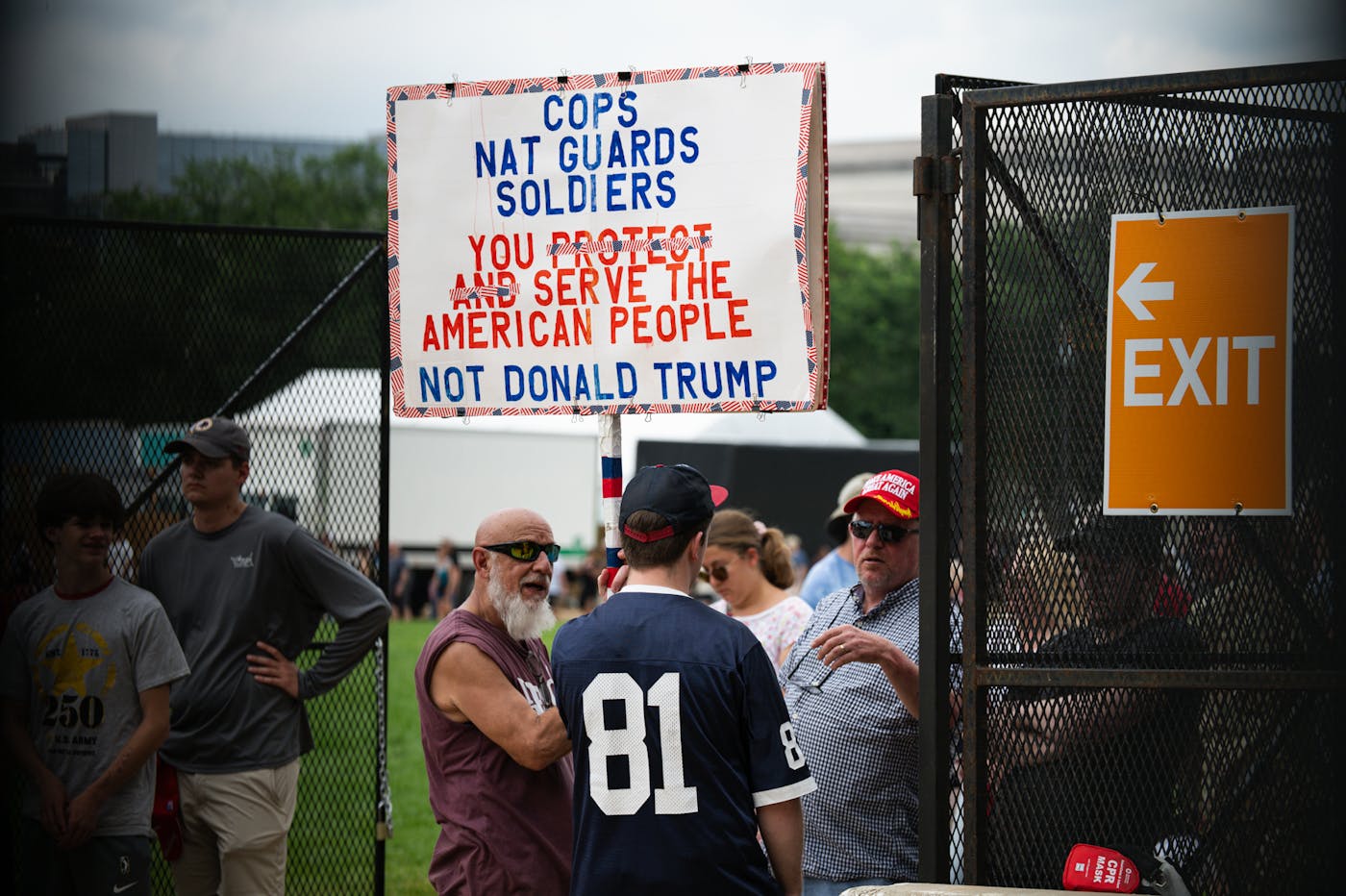
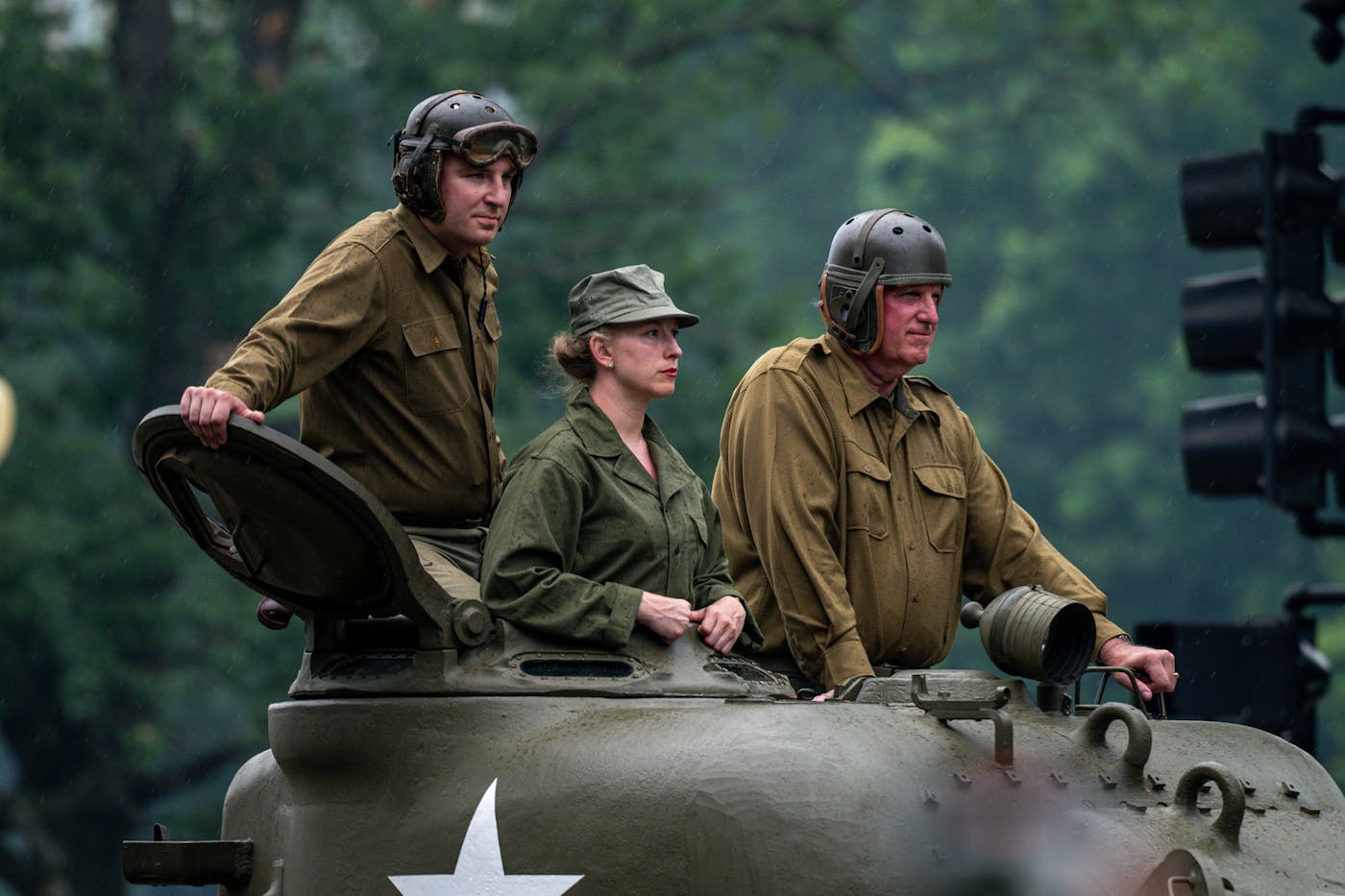
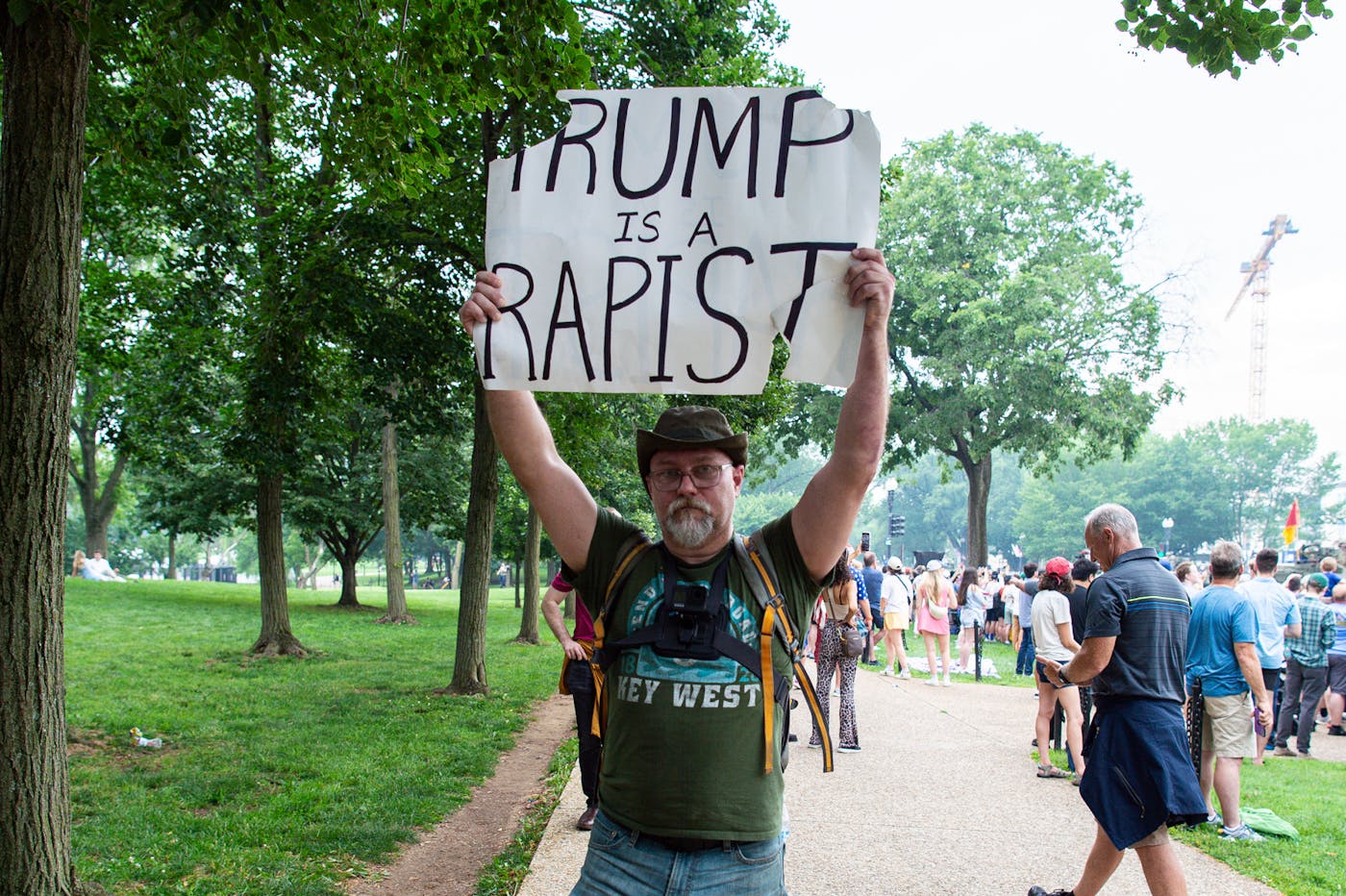
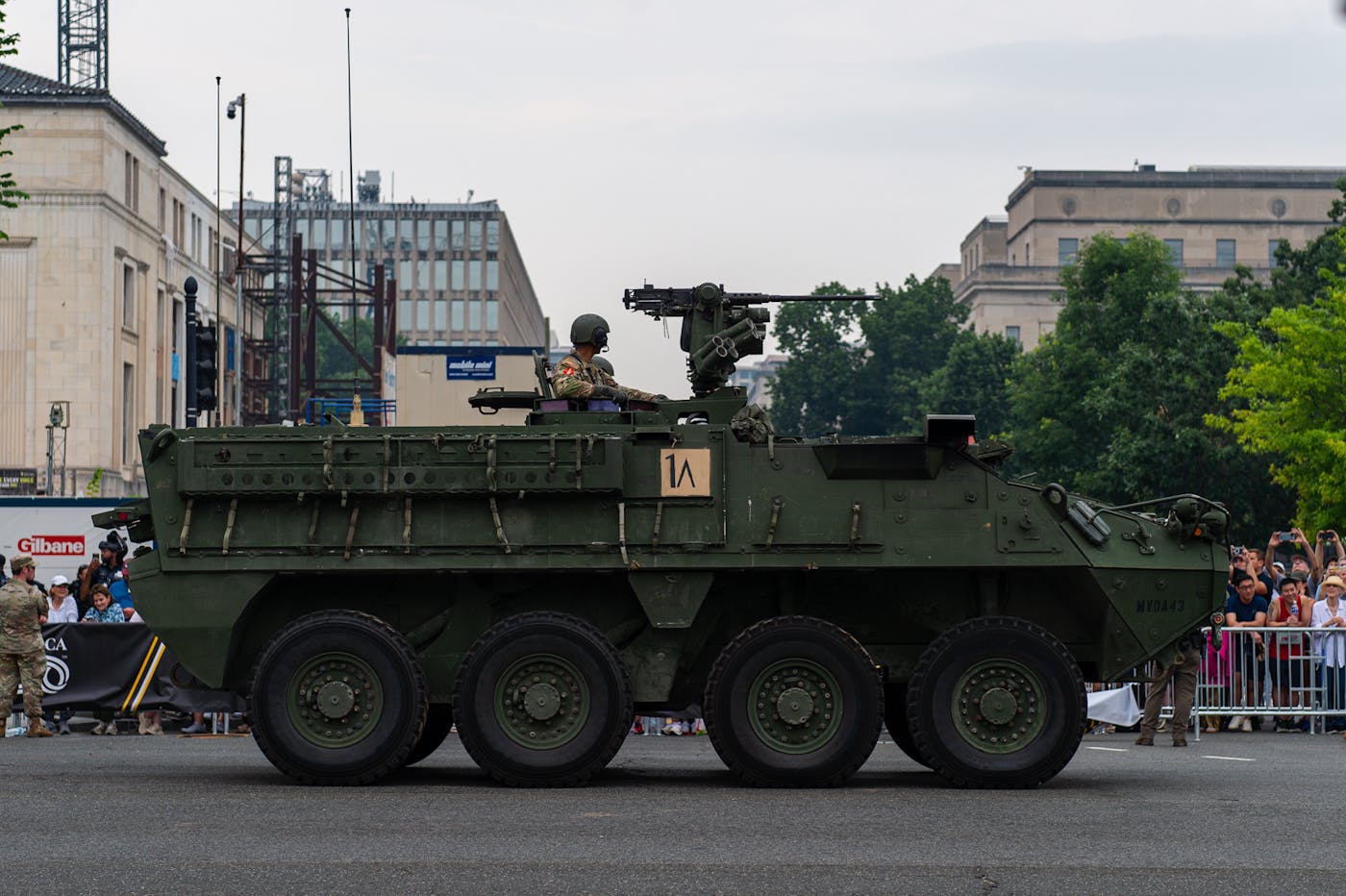
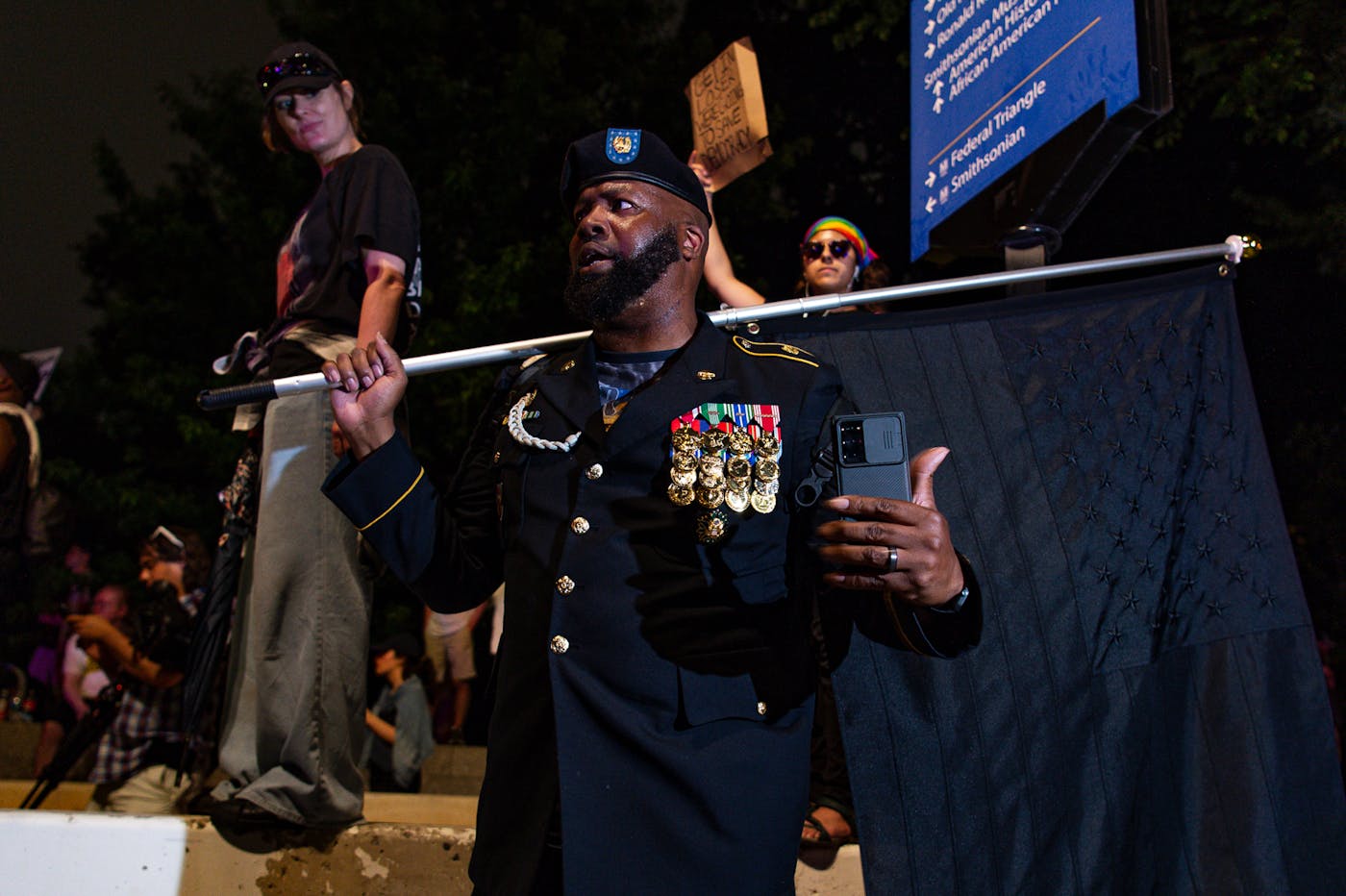


Photojournalist Henry Villarama was awarded the Army’s Civilian Photographer of the Year and the Department of Defense Civilian Photographer of the Year. He enlisted in the U.S. Army in 2012 and is a former Signaleer and paratrooper.